Story and photos by Jonathan Sharp
The London Concours, held on June 5-6, is now in its third year and held again at the Honorable Artillery Company’s headquarters in the City of London, often described as being the location of the second most valuable cricket pitch in London.
As the concours is held in the center of the city, the event is held midweek as during the weekend the area is pretty empty. The visitors on the first day of the two-day event were predominantly business people, many of whom took advantage of the VIP Hospitality on offer. I do hope they also spent time viewing the cars on display before eating and drinking, as the vehicles on display were outstanding.
This year the classes were as follows:
Great Marques Jaguar
Great Marques Ferrari
The Innovators
The Icons
Made in Germany
Outlaws
Lost Marques
Also on display was a very photogenic collection of Lamborghini Miuras to celebrate the 50th anniversary of the iconic British cops and robbers movie The Italian Job, a selection of cars from the collection of historic racer Julian Balme, and a cross section of Supercars, old and new, in the Octane/Evo magazine paddock. Around the edges of the cricket pitch were various classic car and life style dealers offering many opportunities to empty your bank account. I hope you enjoy my selection of the cars.

Entered into the Outlaw
Class, this is not your average Aston Martin Virage, this example is number 3 of 9 LE examples. Being dissatisfied with its performance, Mr Hans Rausing employed the services of Lynx engineering to oversee the work required to increase the performance whilst retaining the standard appearance. The result was 720 bhp and 1146 lb/ft with a driving experience to match.
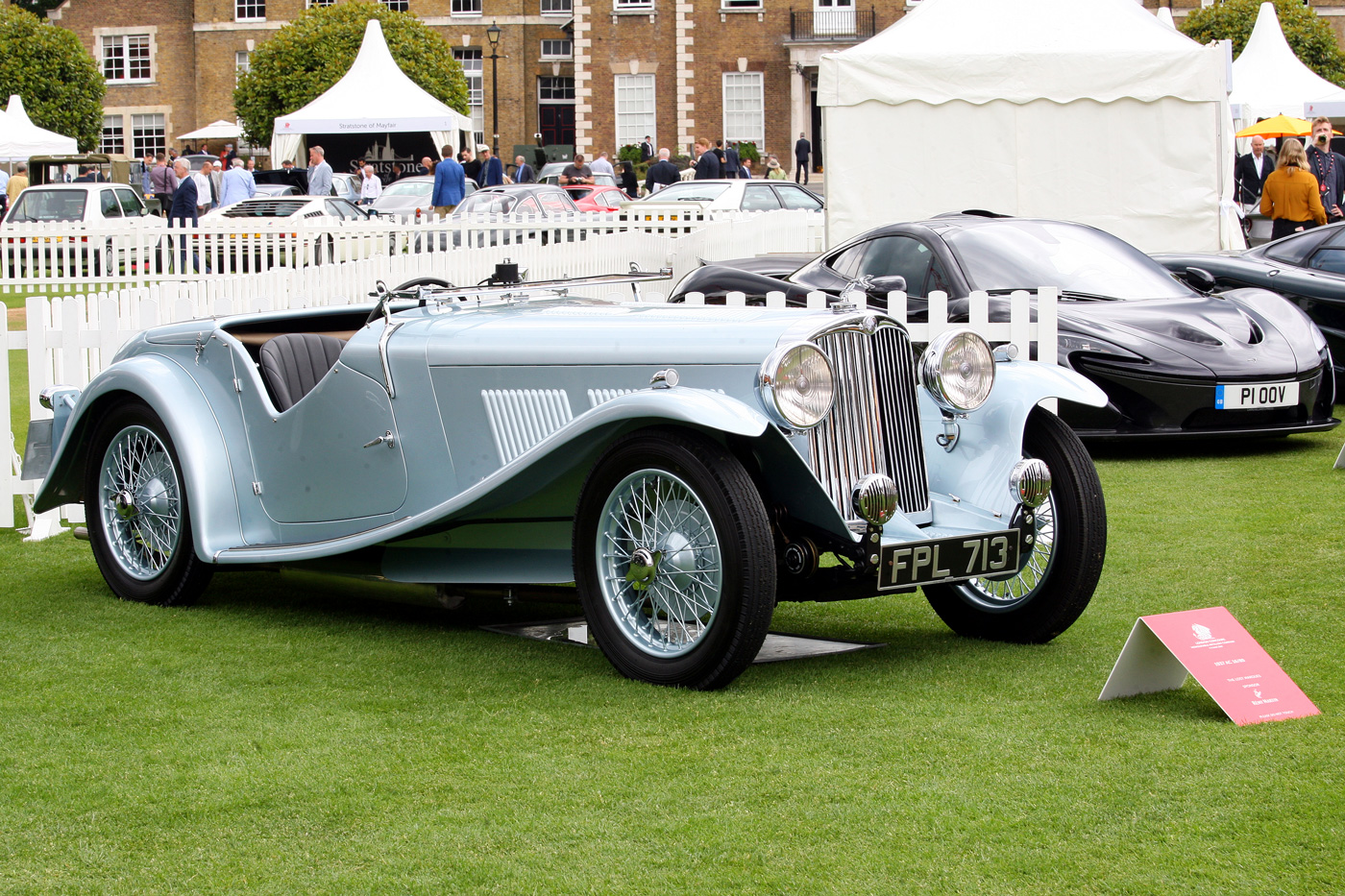
One of only 14 sloping tail examples, this AC 16/80 was first shown at the 1938 London Motor Show. Fully restored over a period of 10 years, the London Concours was the first time that the car has been exhibited since being exported to the USA during the 1960s.
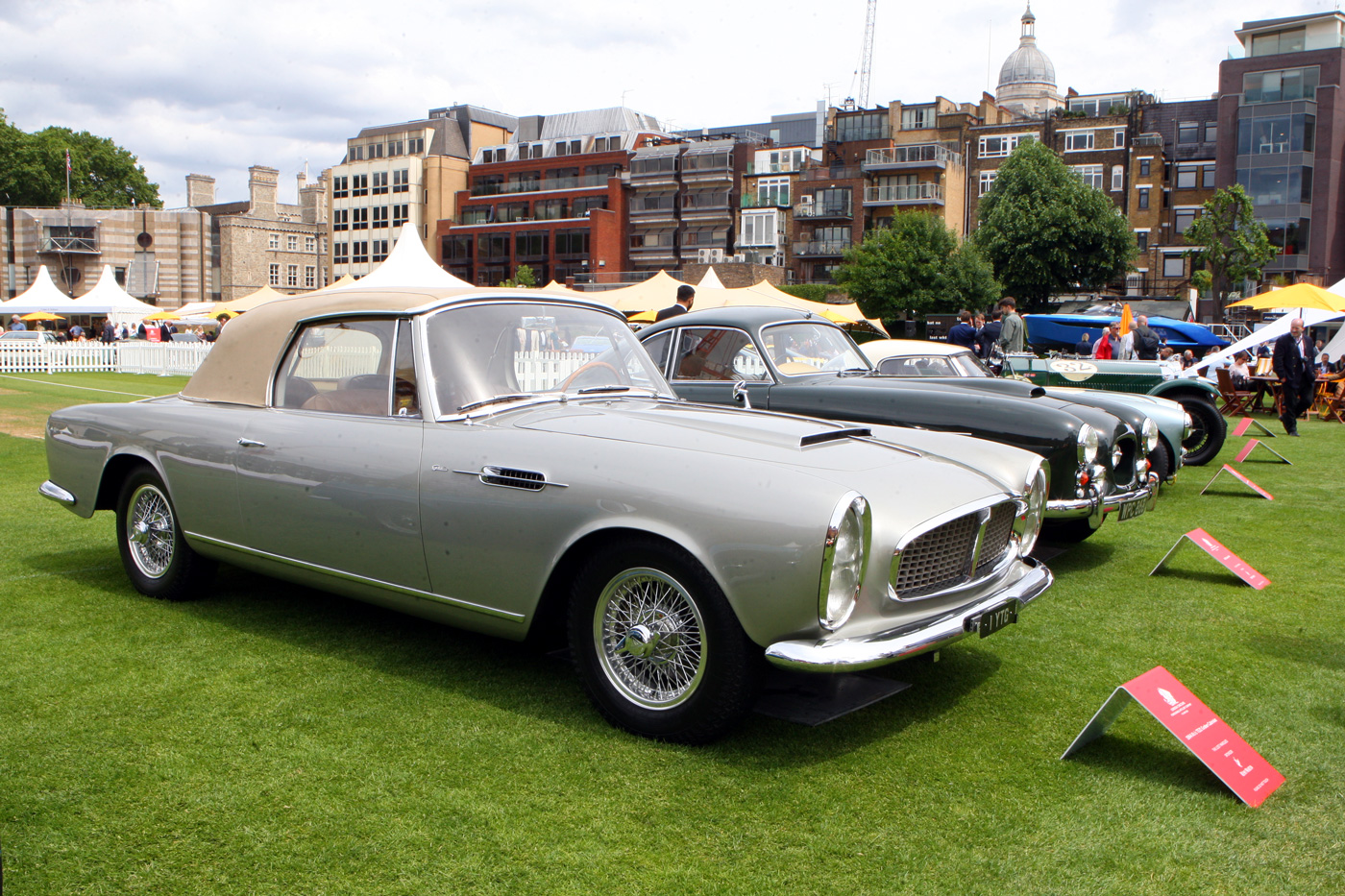
Commissioned by Julian Oishei (his father is credited with bringing the windscreen wiper to the world) this this Graber-bodied Alvis TE21 was first shown at the 1965 Geneva Motorshow.
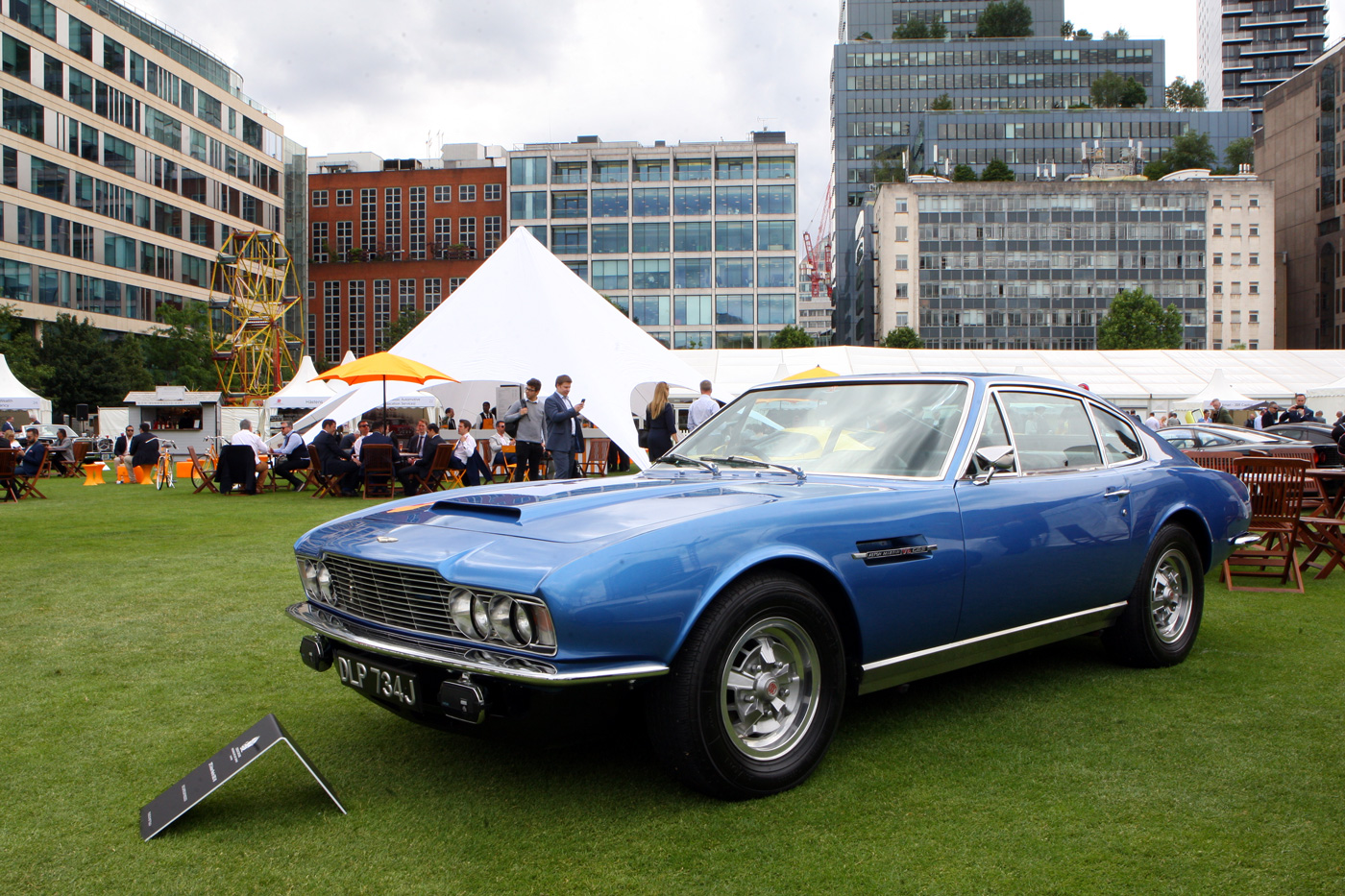
Displayed as part of the Octane Evo paddock the 1971 Aston Martin DBS V8 was the fastest four-seater at the time.

From the Lost Marques class this 1964 Mk3 Austin Healey 3000 is listed as being a works car. Bodywork built by Jensen Motors with final assembly being carried out at the MG works in Abingdon.
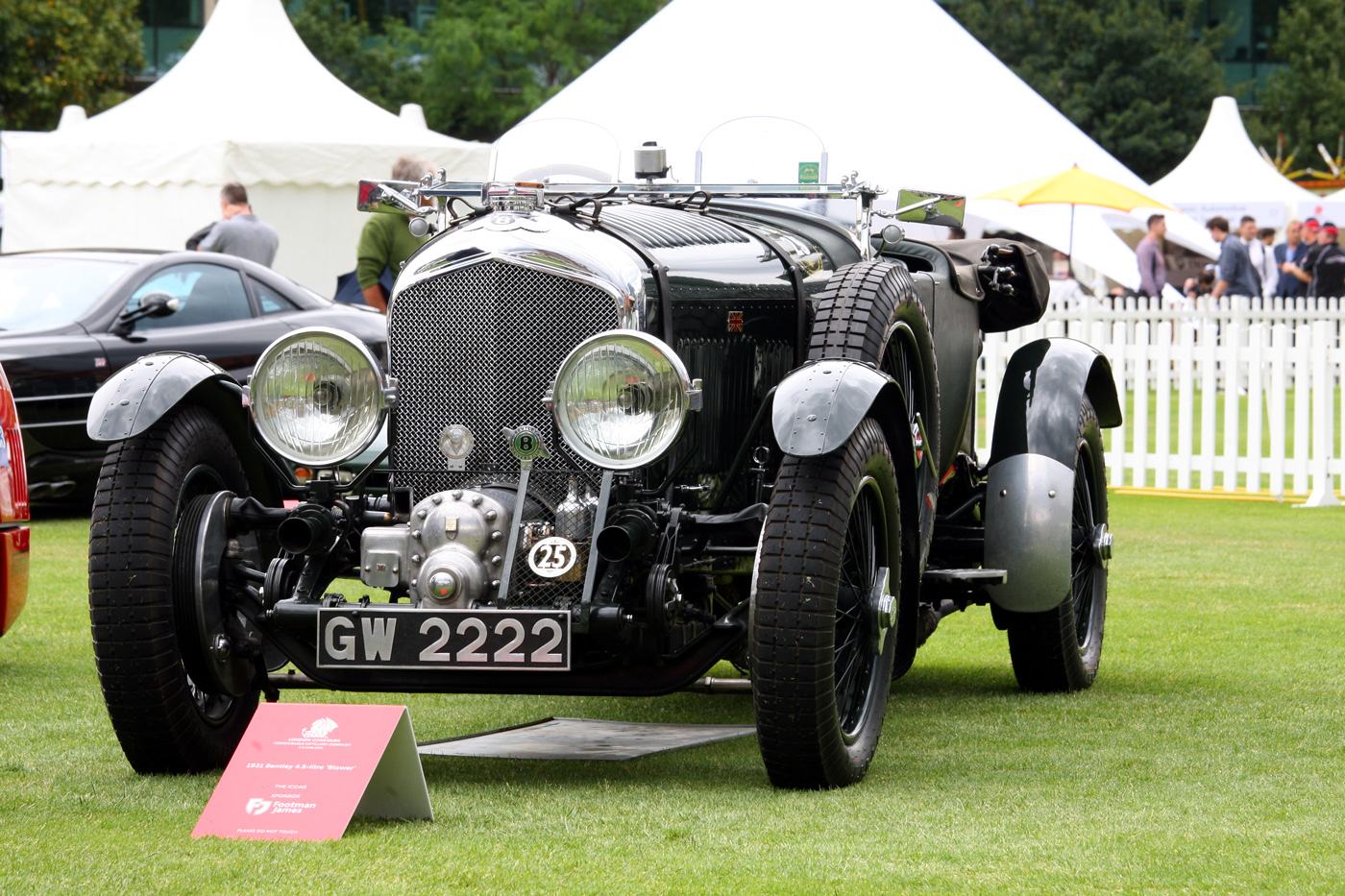
Entered in the Icons class Ettore would definitely describe this 1931 Bentley 4.5 Litre blower as a fast lorry. One of only 50 Blower Bentleys produced and the last of the 25 first series built with the smooth blower case.
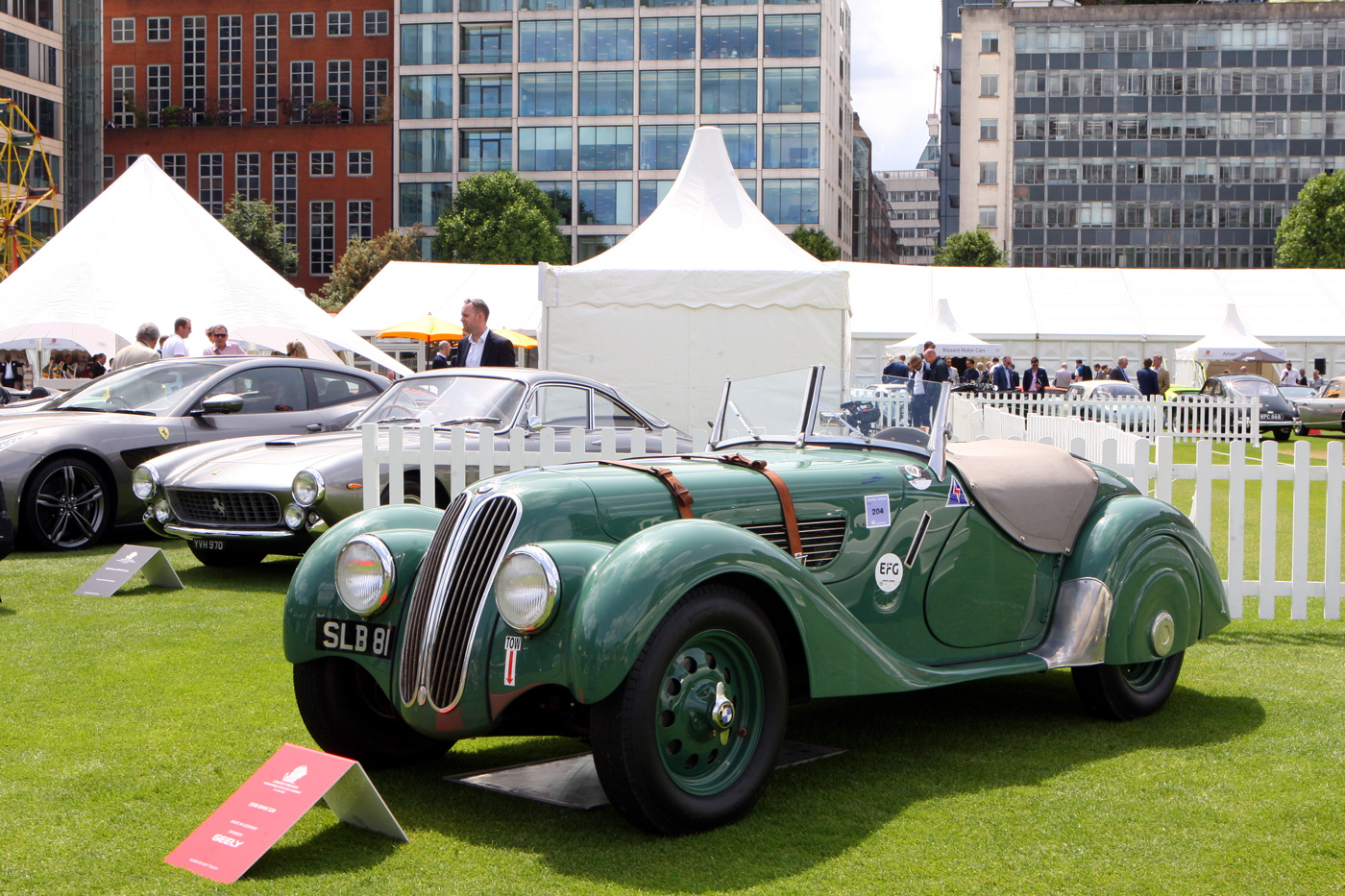
From the Made in Germany class this 1938 BMW 328 with its 79 bhp 6-cylinder engine has a top speed of 93 mph.

This 1981 BMW M1 was also an entrant in the Made in Germany class. The brainchild of Jochen Neerpasch from the pen of Giorgetto Giugiaro with production to be done by Lamborghini but ultimately final assembly was carried out by BMW’s M division.

An overused expression but this 1955 Bristol 404 is definitely a businessman’s express. The winner of the Lost Marques class this example is number 34 of 52 built. The car has remained in the care of Sir George White, son of the founder of Bristol cars for the past 54 years.
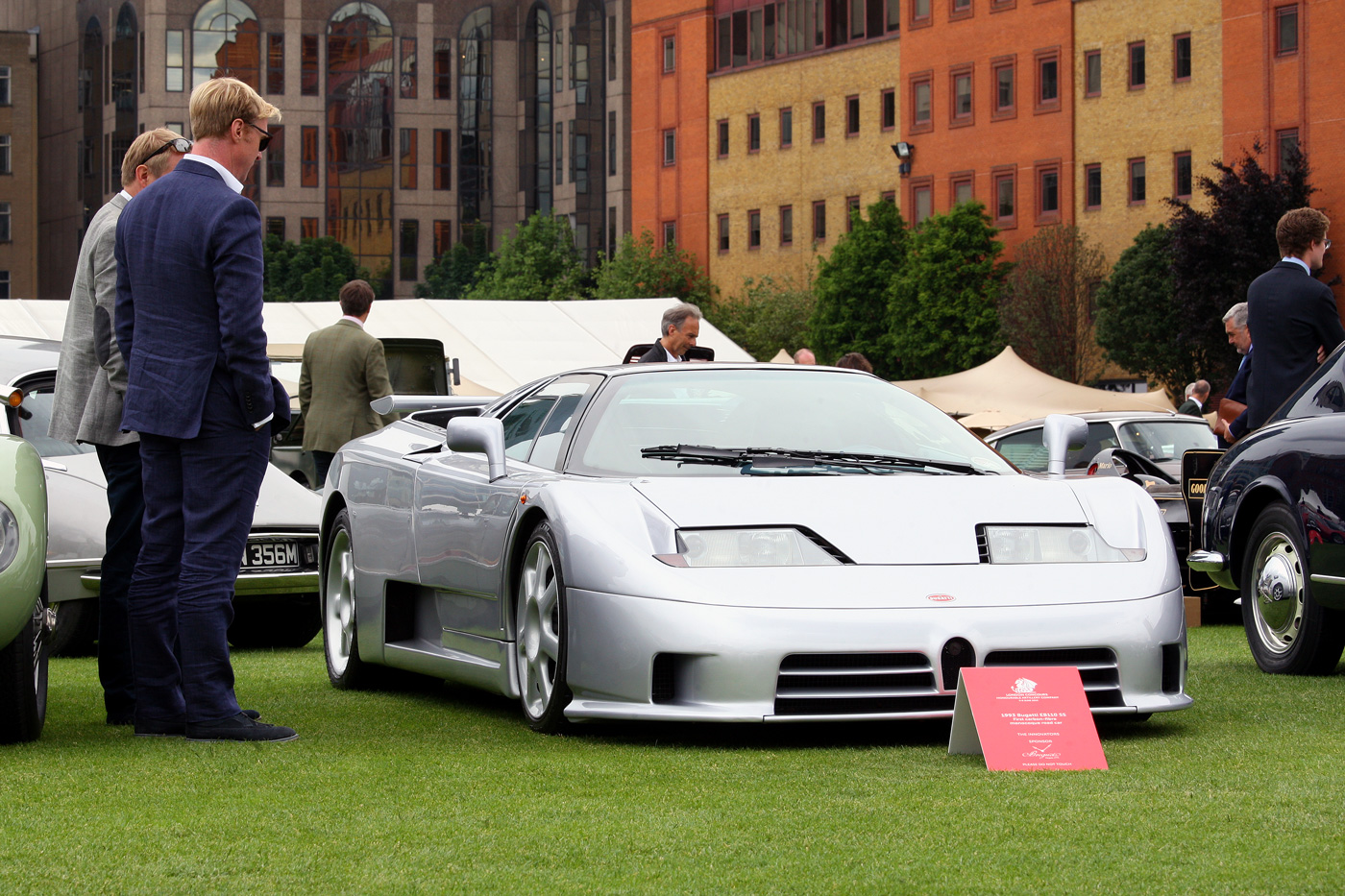
Entered into the Innovators class, the first carbon fibre monocoque road car was this Bugatti EB110 SS, the work of engineer Paolo Stanzani and stylist Marcello Gandini who designed the prototype, and Giampaolo Benedini, who designed the final production model.
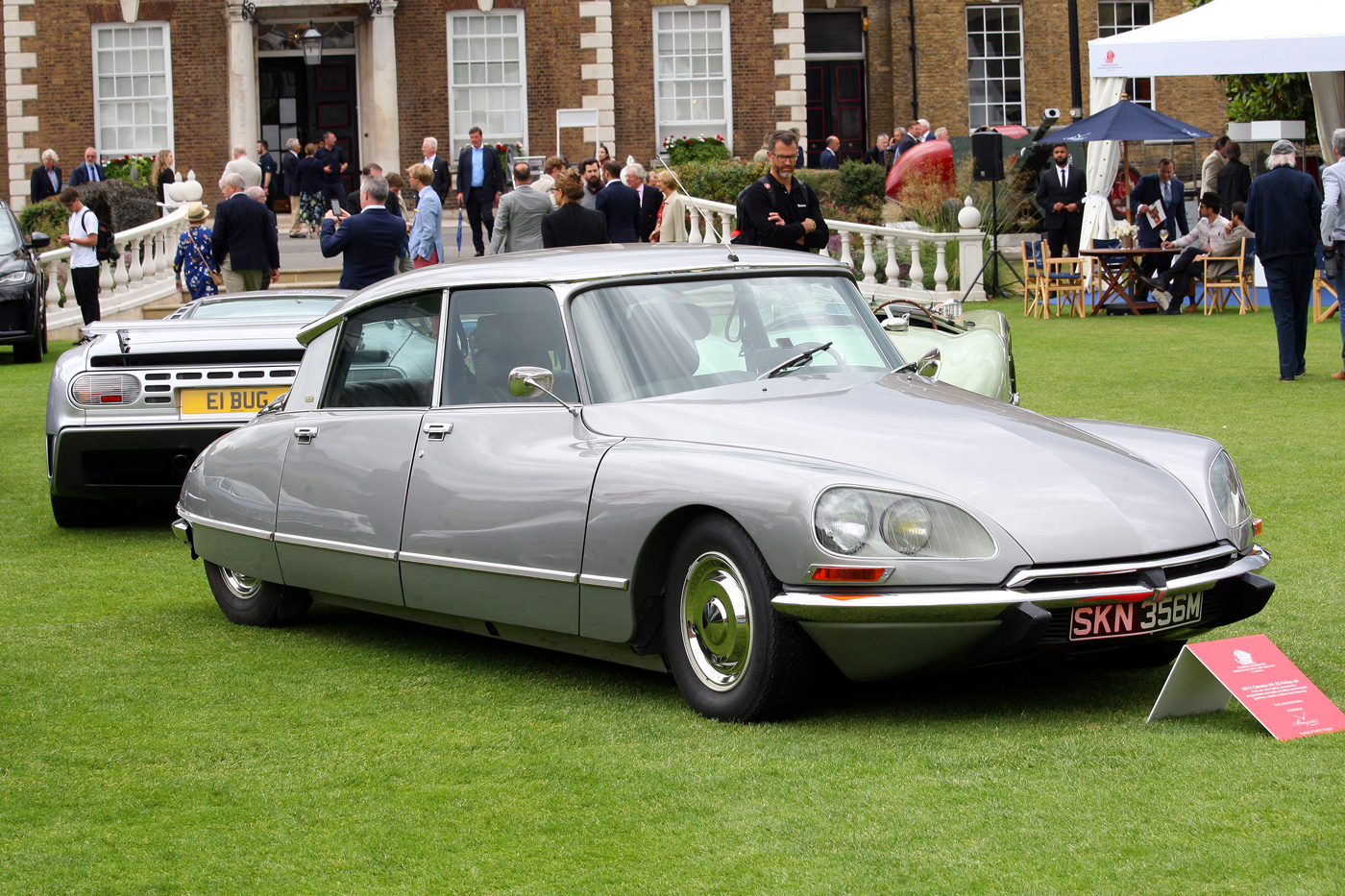
From the Innovators class, this 1974 Citroen DS 23 Pallas EFi, described as the first car with hydro pneumatic suspension and hydraulic commanded clutch, gearbox, steering and brakes.
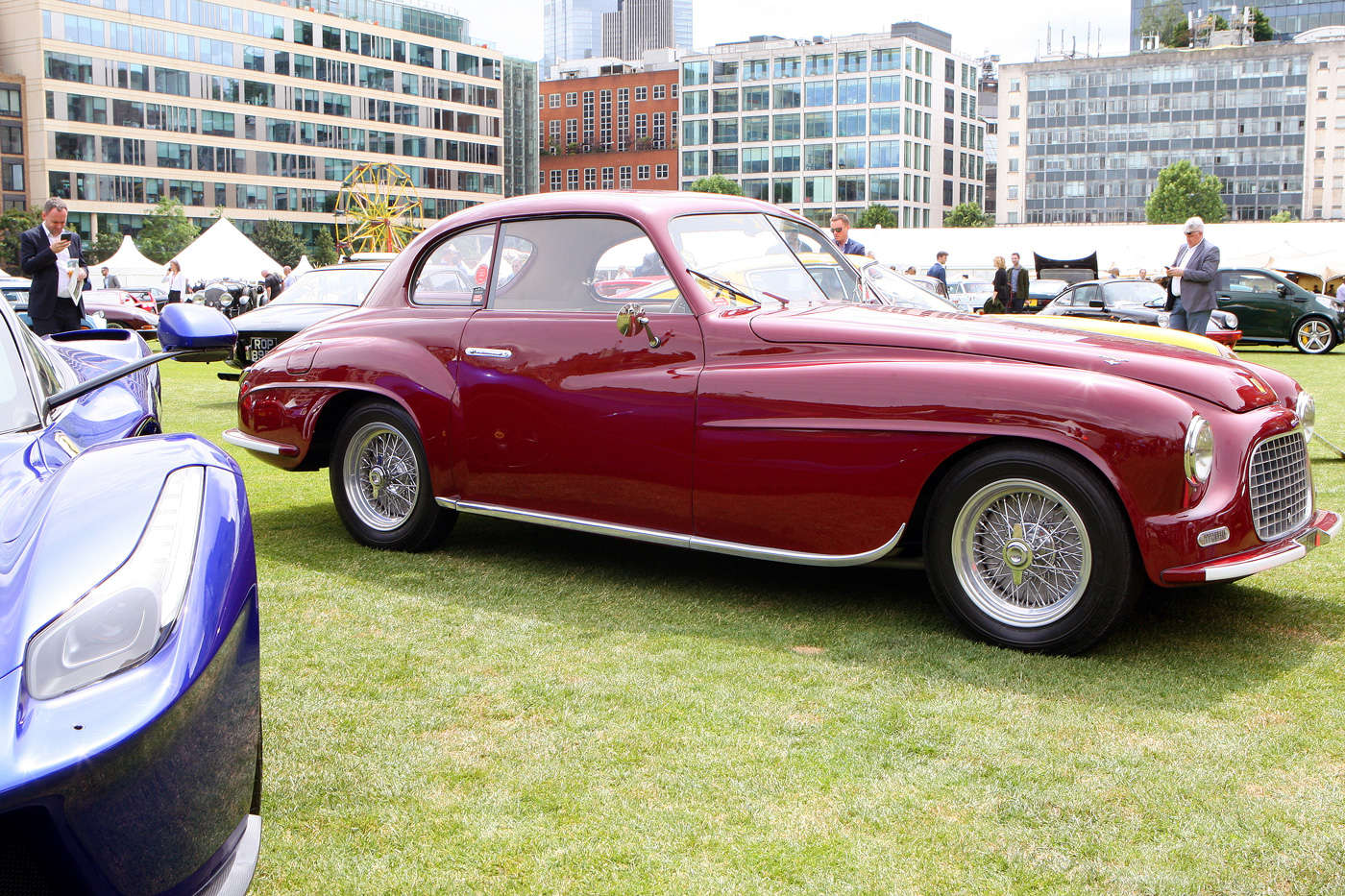
An old favorite, especially of my wife, 1949 Ferrari 166 Inter by Touring. The ninth Ferrari road car built.
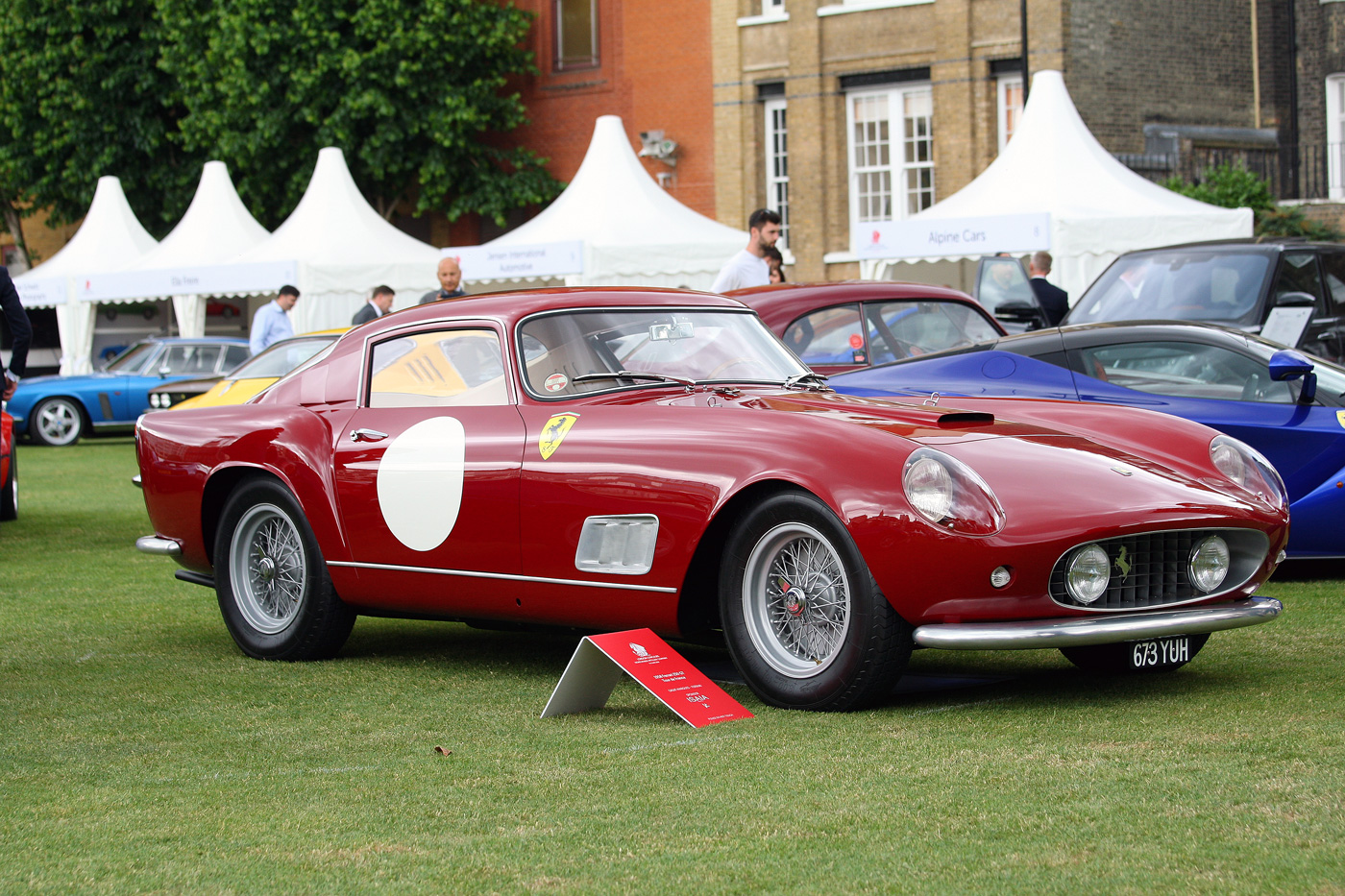
1958 Ferrari 250GT Tour de France chassis 0763 was delivered to Jacques Swaters for the use of Ecurie Francorchamps and then sold to privateer racer Leon Elde Dernier.

A Ferrari Dino in the Outlaw class! Yep this is the 300 bhp Dino Evo by Motortechnique. Out goes the 160 bhp V6 engine in comes the 300 bhp V8 engine from a 328 with fuel injection from the 360 which also provided the wheels and brakes.
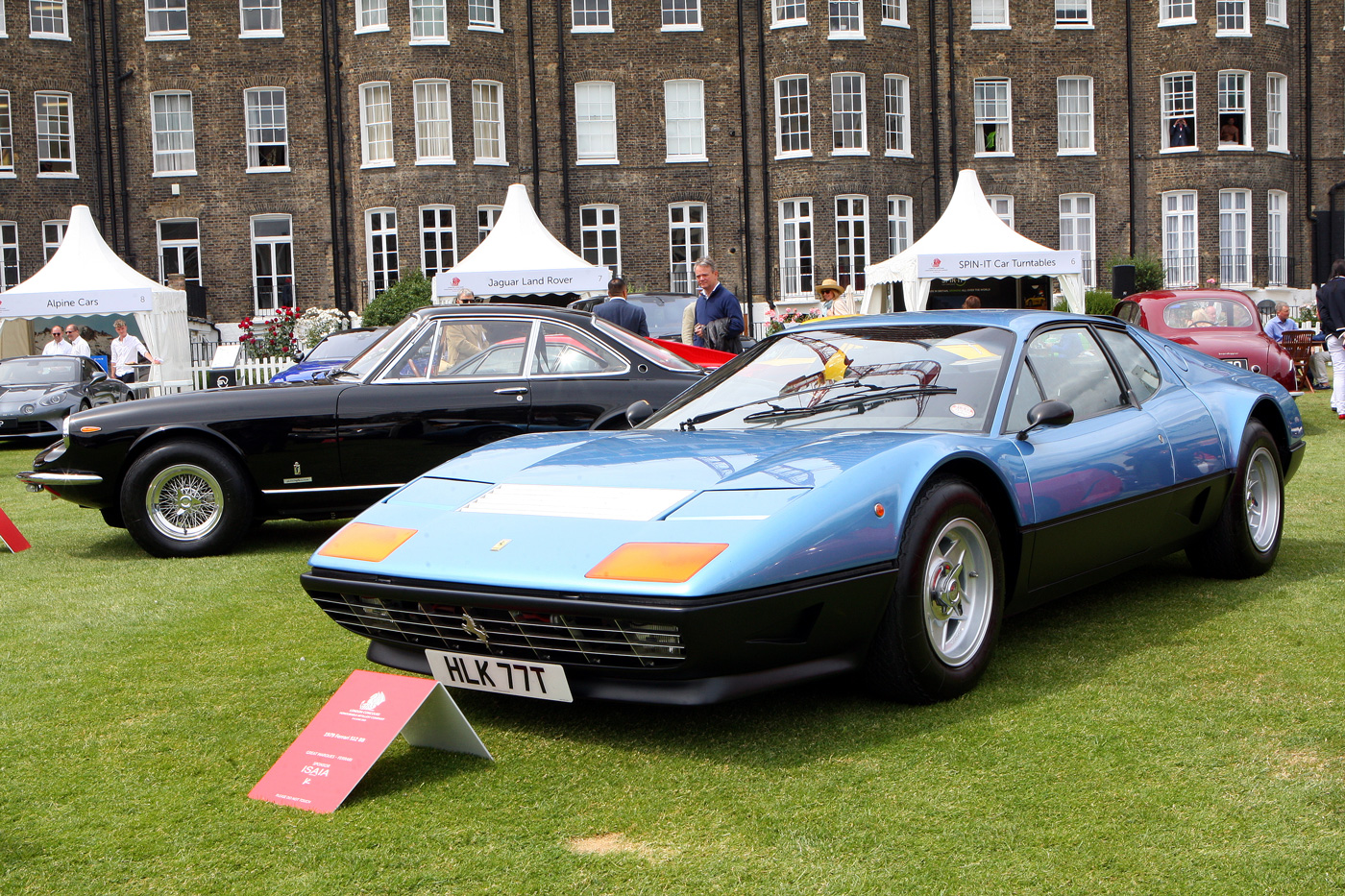
Recently fully restored this 1979 Ferrari 512BB is now presented in its original Azzurro Metalizato.
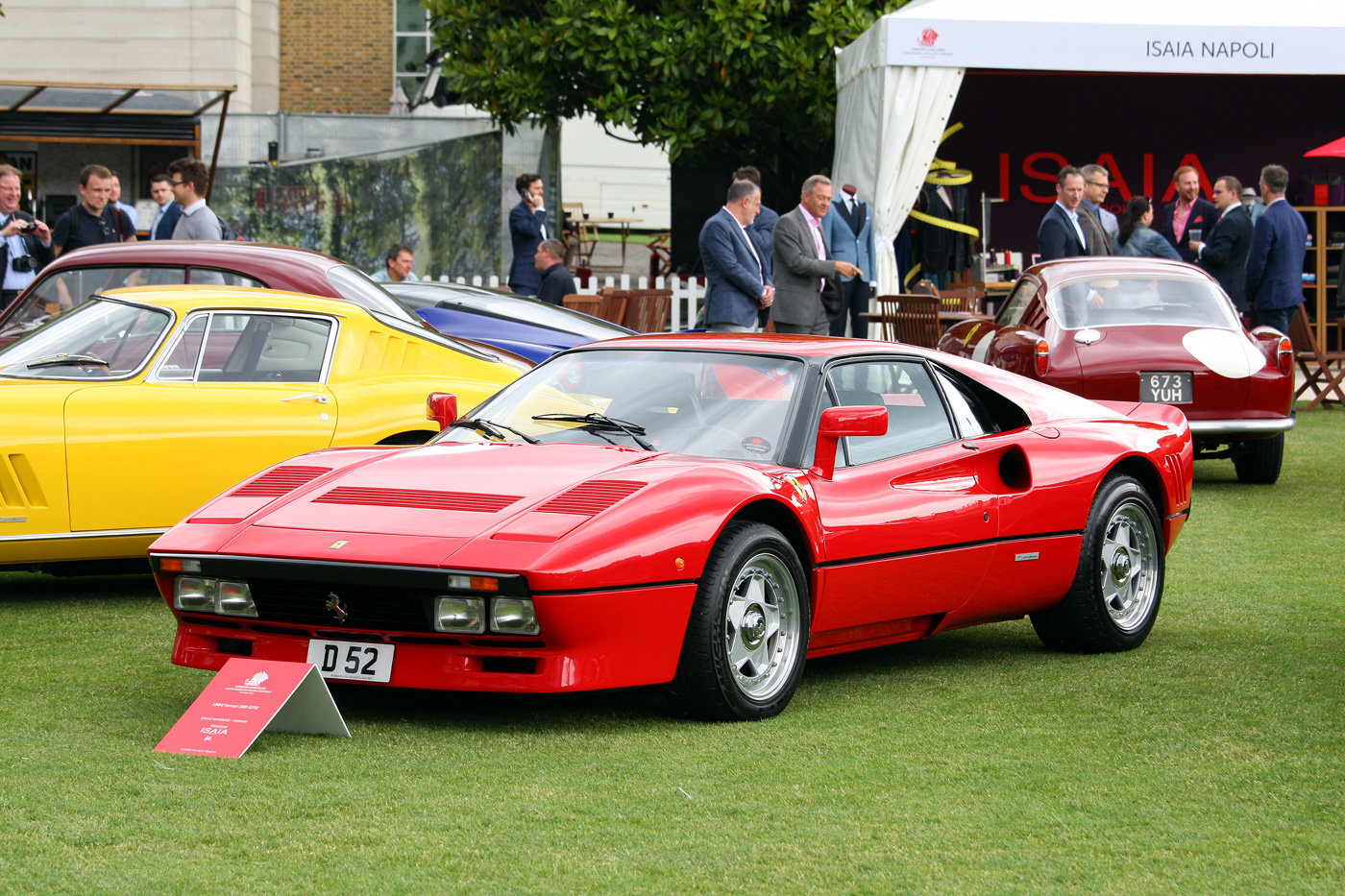
One of two 288 GTOs at the event. This example, number 22 of the 272 examples built, was supplied in February 1985 to Eddie Cheever. Eddie is recorded as saying “It’s a monster, a race car for the road! I drove from Rome to Bologna the other week. That’s 370 kilometers and it took 2 hours 15 minutes at night and there was rain!” It was entered into the Great Marques Ferrari class. The other example was an entrant in the Icons class.
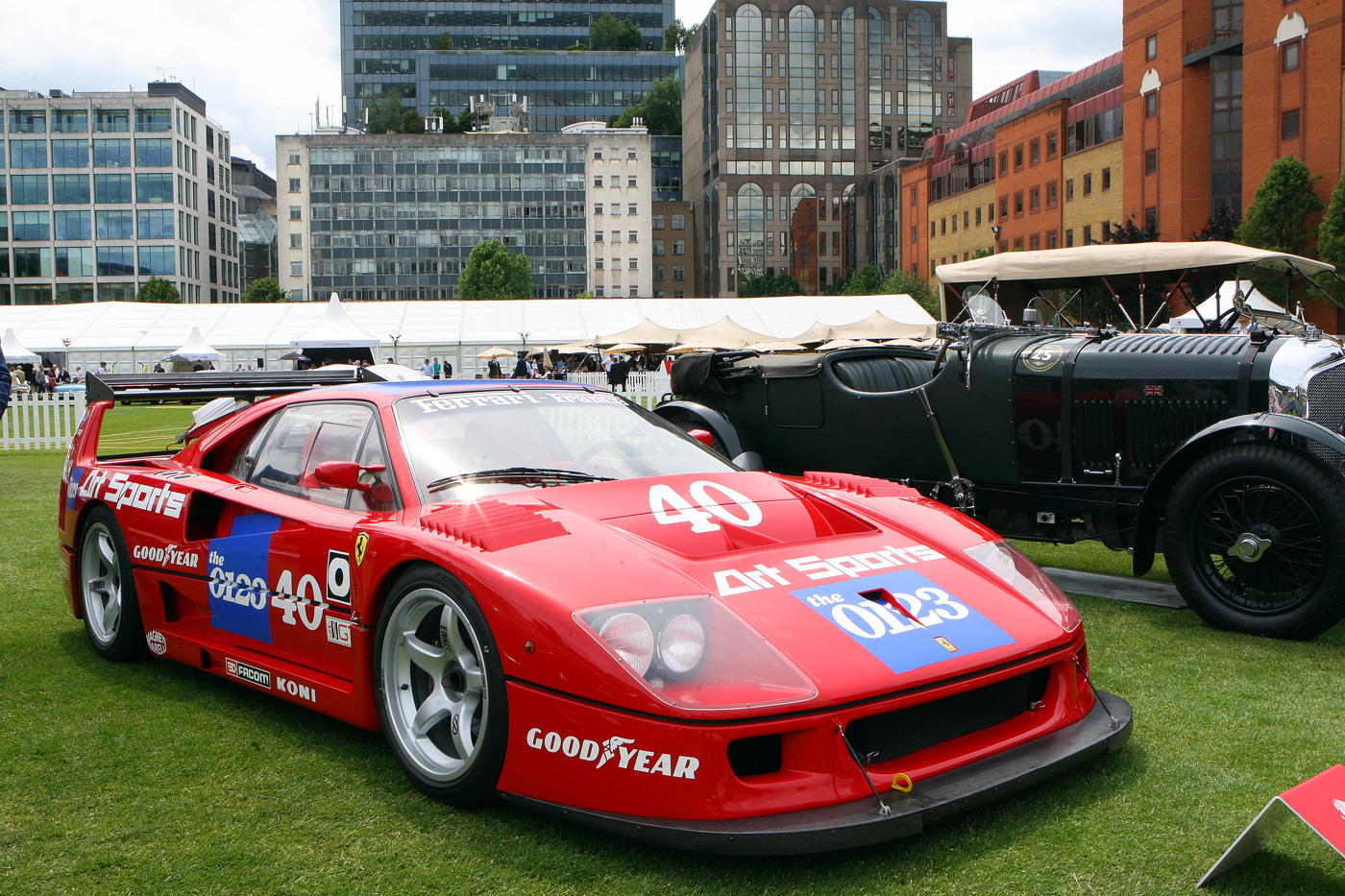
From the Icons class. 1990 Ferrari F40 LM, One of 19 examples built. 750 PS and the only ex-Ecurie Pozzi team car in private hands.
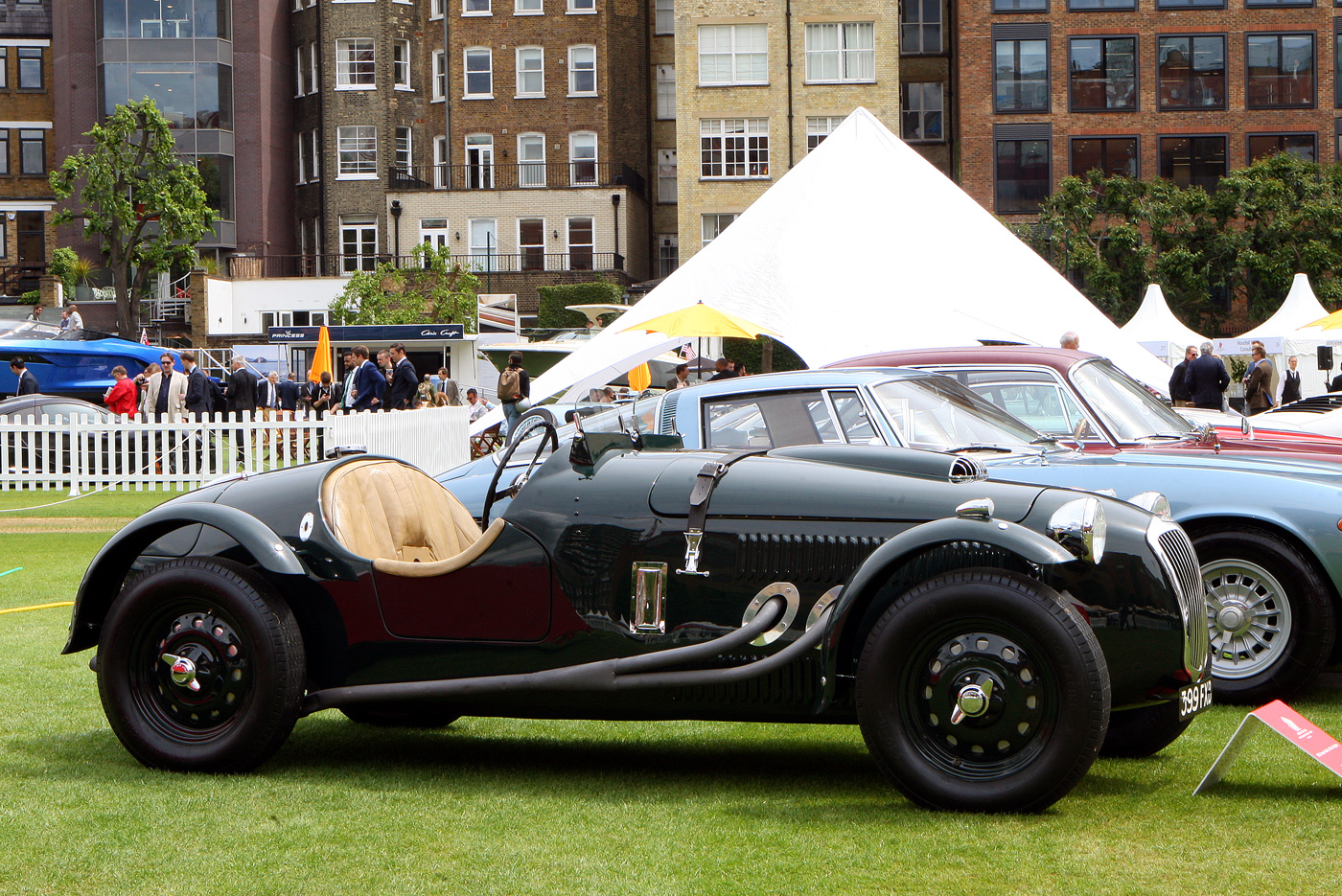
From the Lost Marques this 1951 Fraser Nash Le Mans Replica, one of only 50 built, was fully restored by Tony Crook of Bristol cars fame.
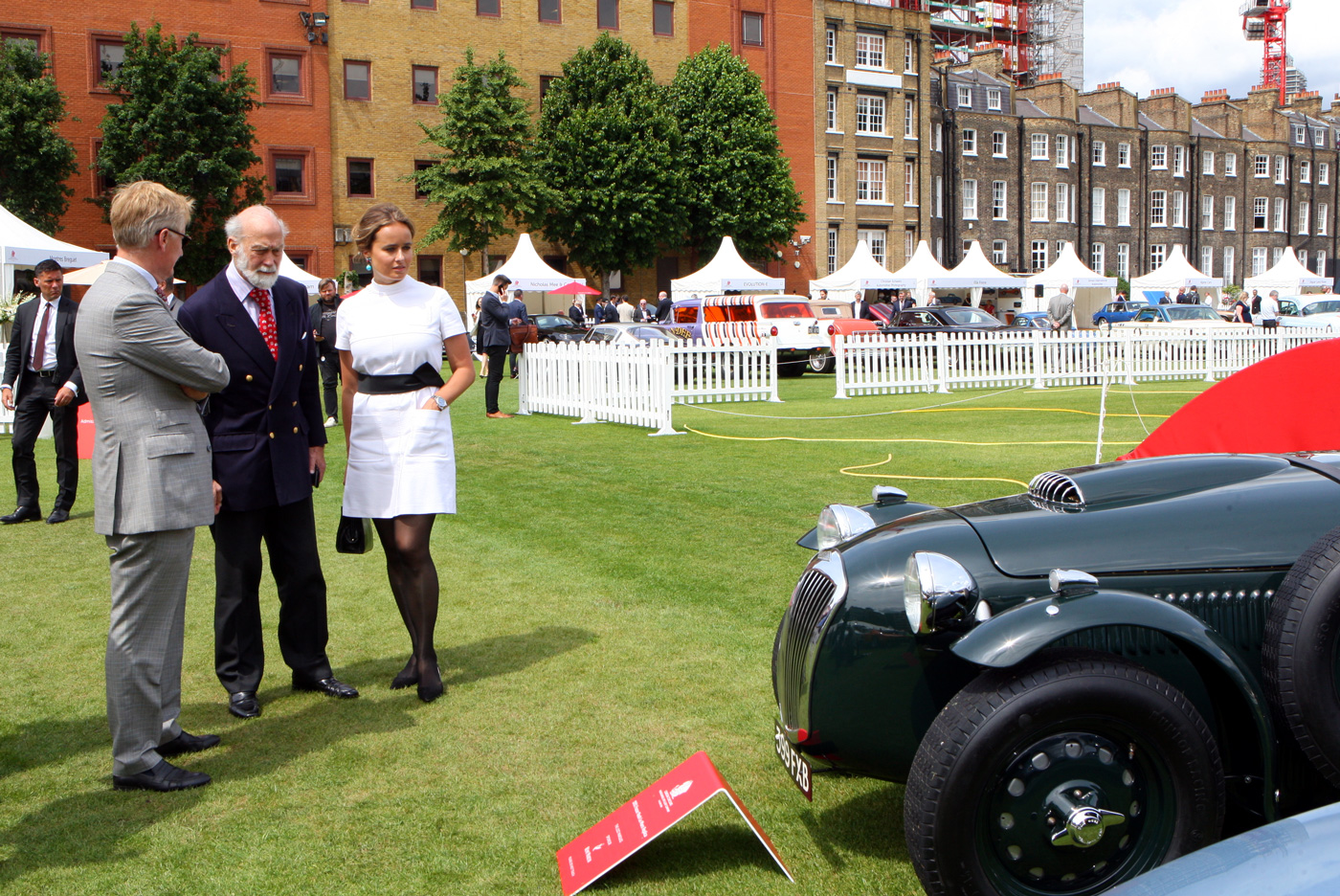
His Royal Highness Prince Michael of Kent learns of the history of the 1951 Fraser Nash Le Mans Replica
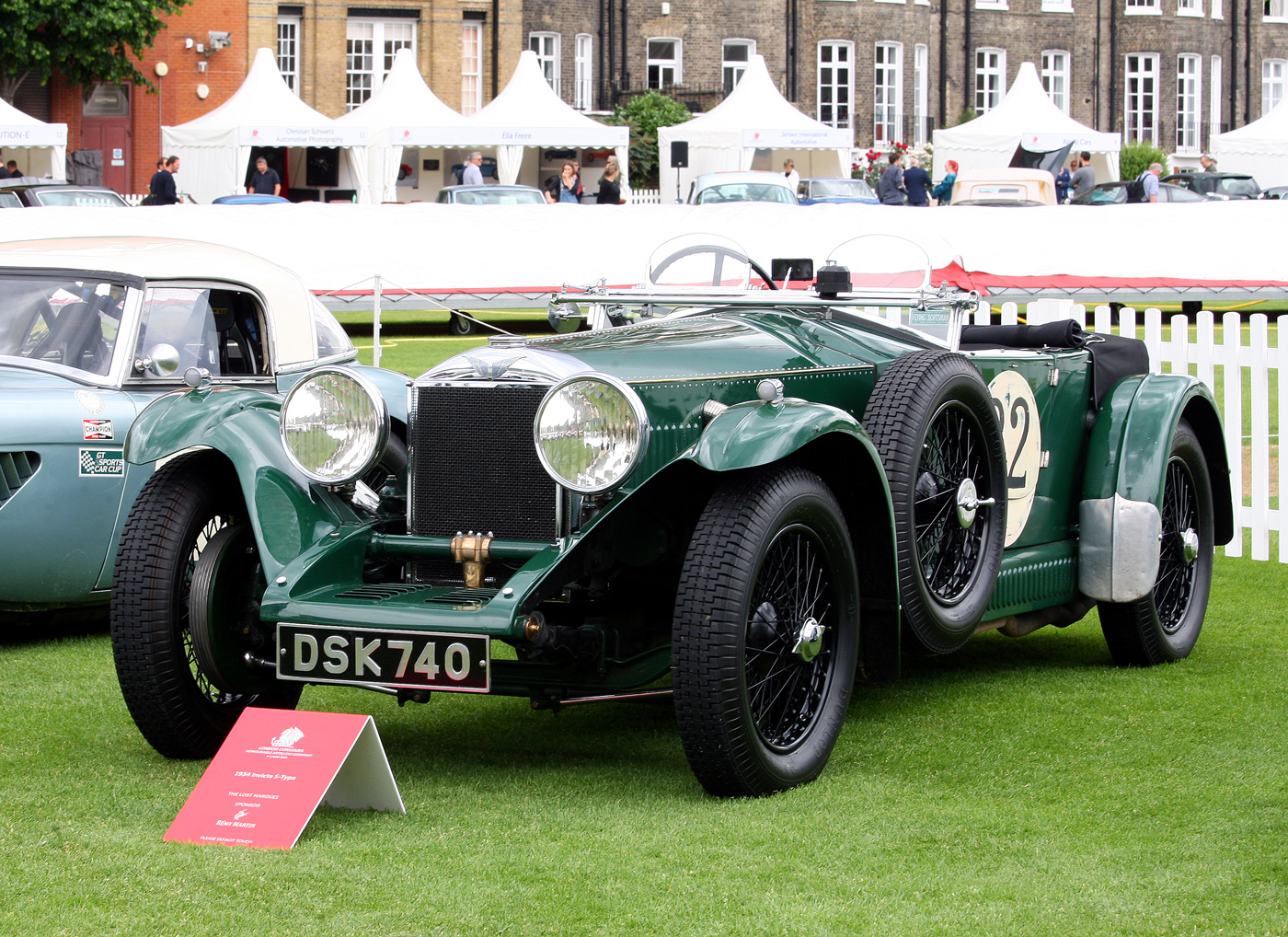
Noel Macklin set out to build a car with the quality and reliability of a Rolls Royce and the handling of a Bentley. The Invicta S type was first shown at the 1930 London Motor show. Only 77 examples were constructed before the depression brought on the demise of the marque. This example, entered in the Lost Marques class, dates from 1934 and is one of the last 3 examples built with coachwork by Carbodies. Supplied new to an Indian Prince later owners included Victor Gauntlett and Peter Livanos of Aston Martin fame.
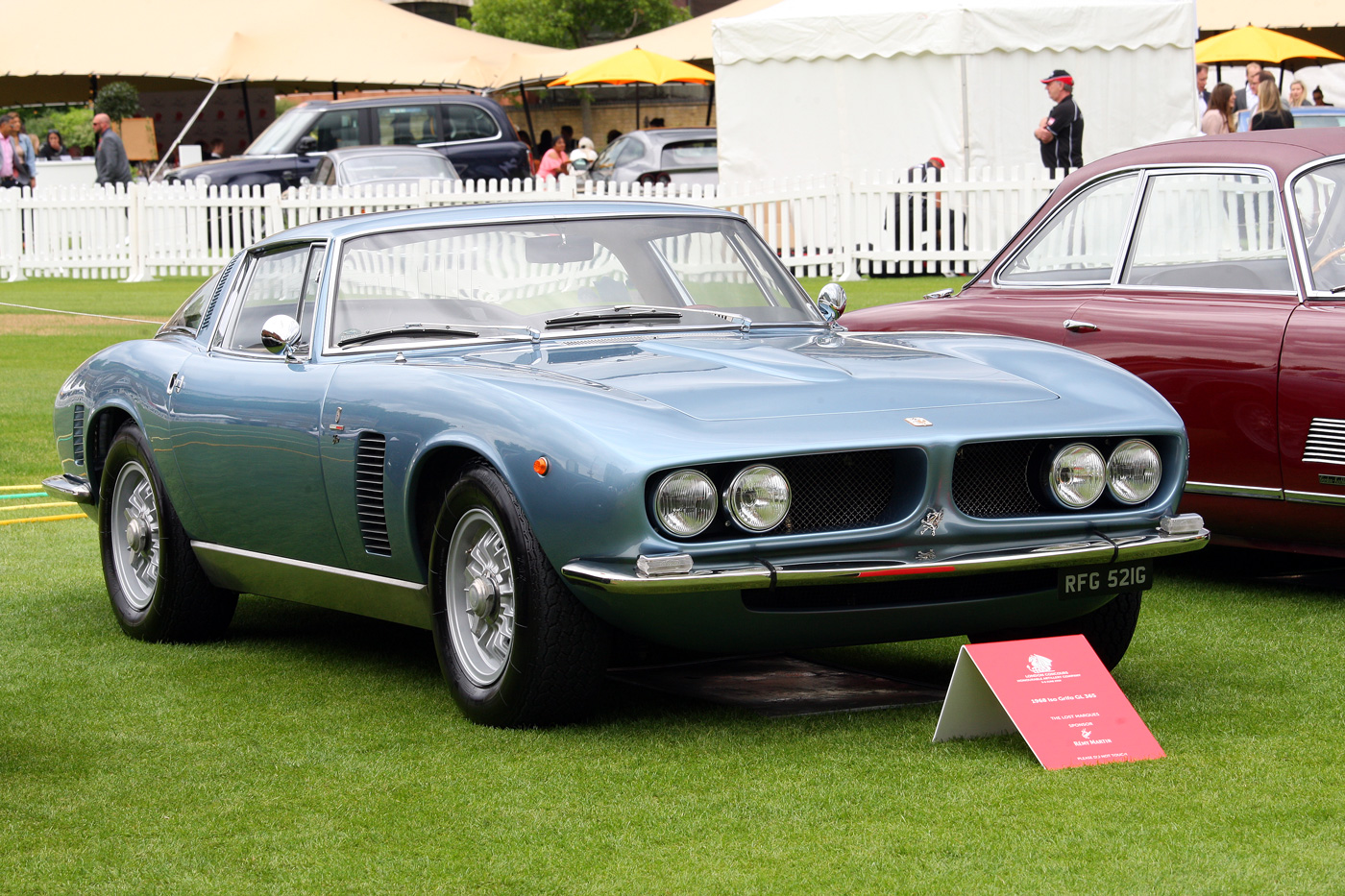
From the Lost Marques class a 1968 Iso Grifo GL365. Fully restored by Iso specialist Roberto Negri between 2004 and 2008.
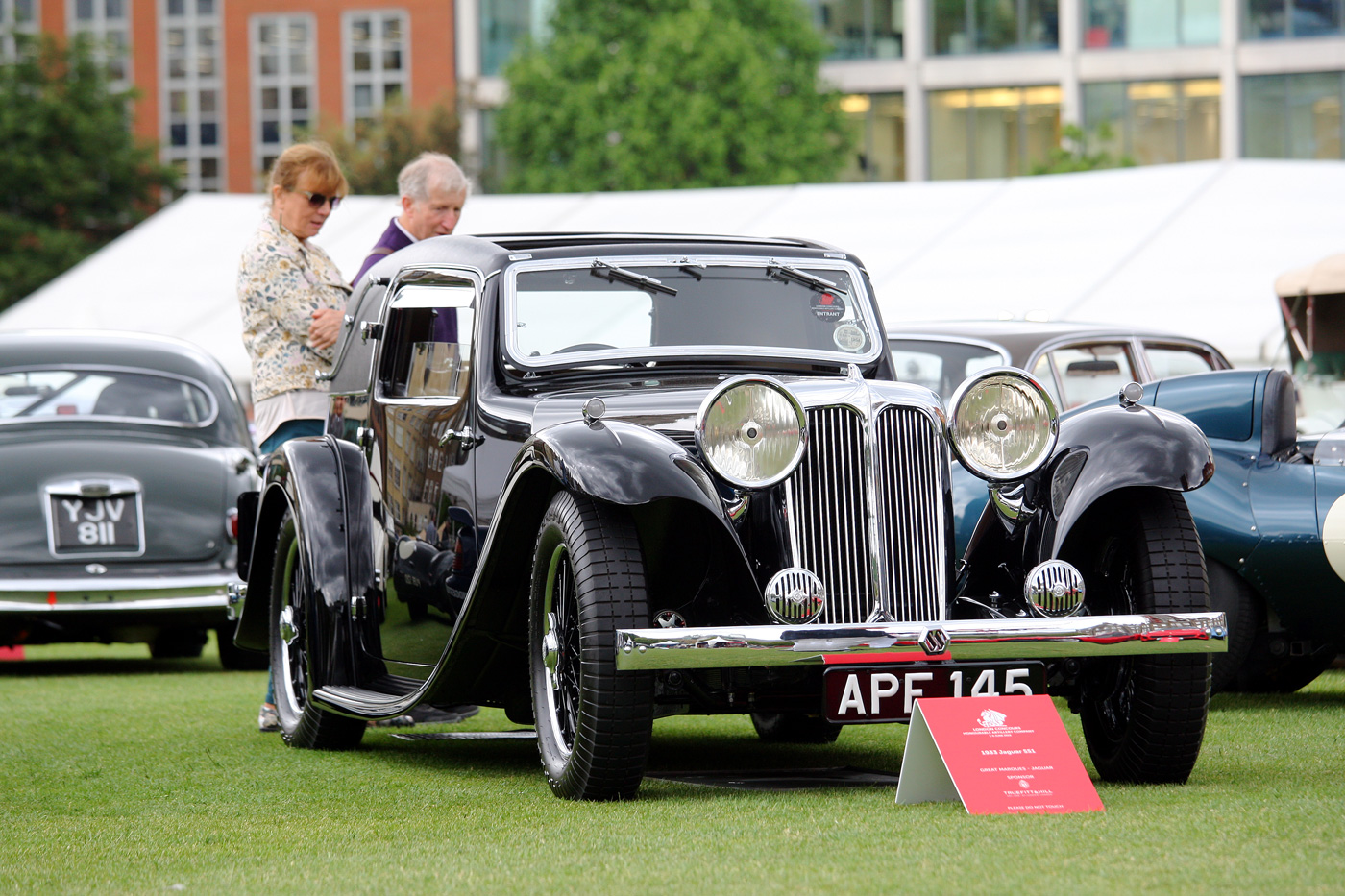
From the Great Marques Jaguar class. Restored over an eight year period, this Swallow Side car SS1 Coupe dates from 1933. In production from 1932 to 36, 148 examples were constructed.
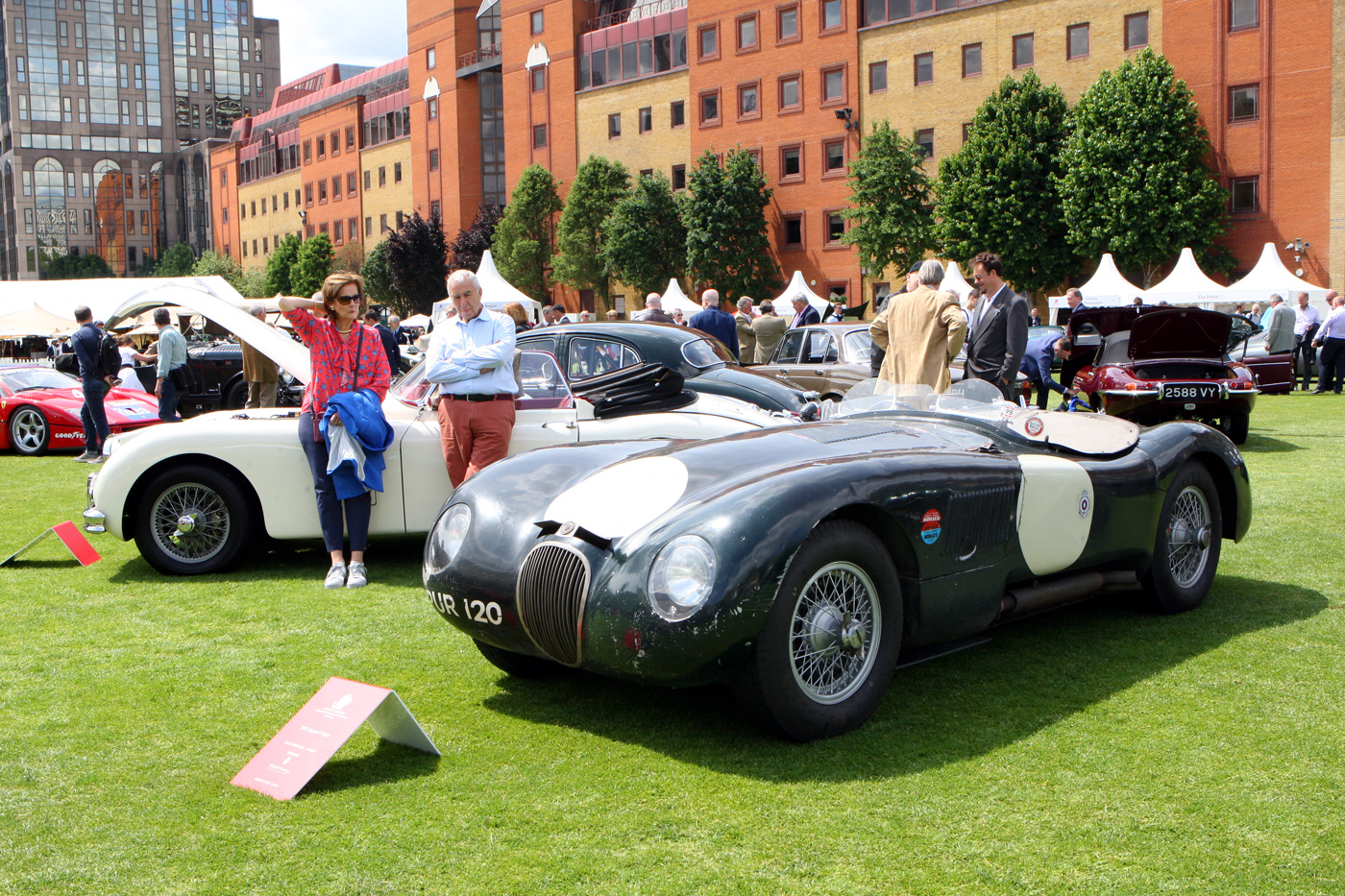
Entered into the Great Marques Jaguar class, this amazingly patinated 1953 Jaguar C Type which I understand is chassis XKC043.
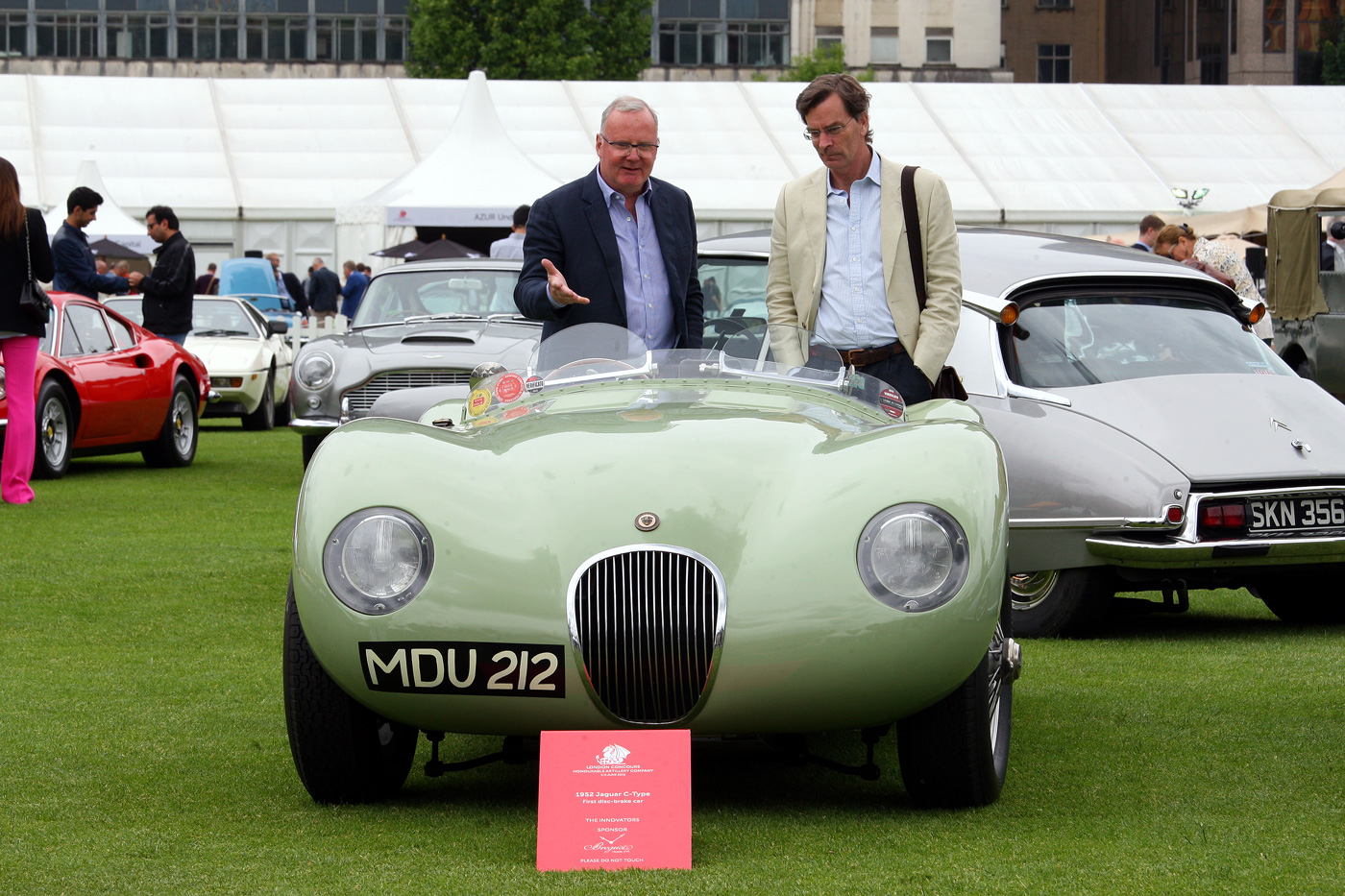
Winner of Best in Show, In the Innovators class as the first disc-braked car, this 1952 Jaguar C XKC005 Type was raced by Tommy Wisdom in the Monte Carlo Grand Prix, and also driven by Stirling Moss for most of that season including victory at Reims. Finished in the original livery from the 1953 Millie Miglia.
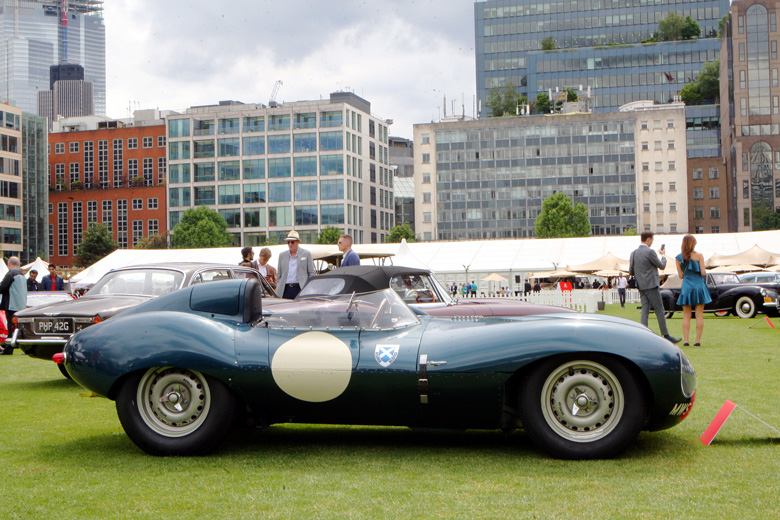
From the Great Marques Jaguar class, a 1955 D Type XKD561, ex-Ecurie Ecosse as driven by Ron Flockhart, Desmond Titterington and Ninian Sanderson.
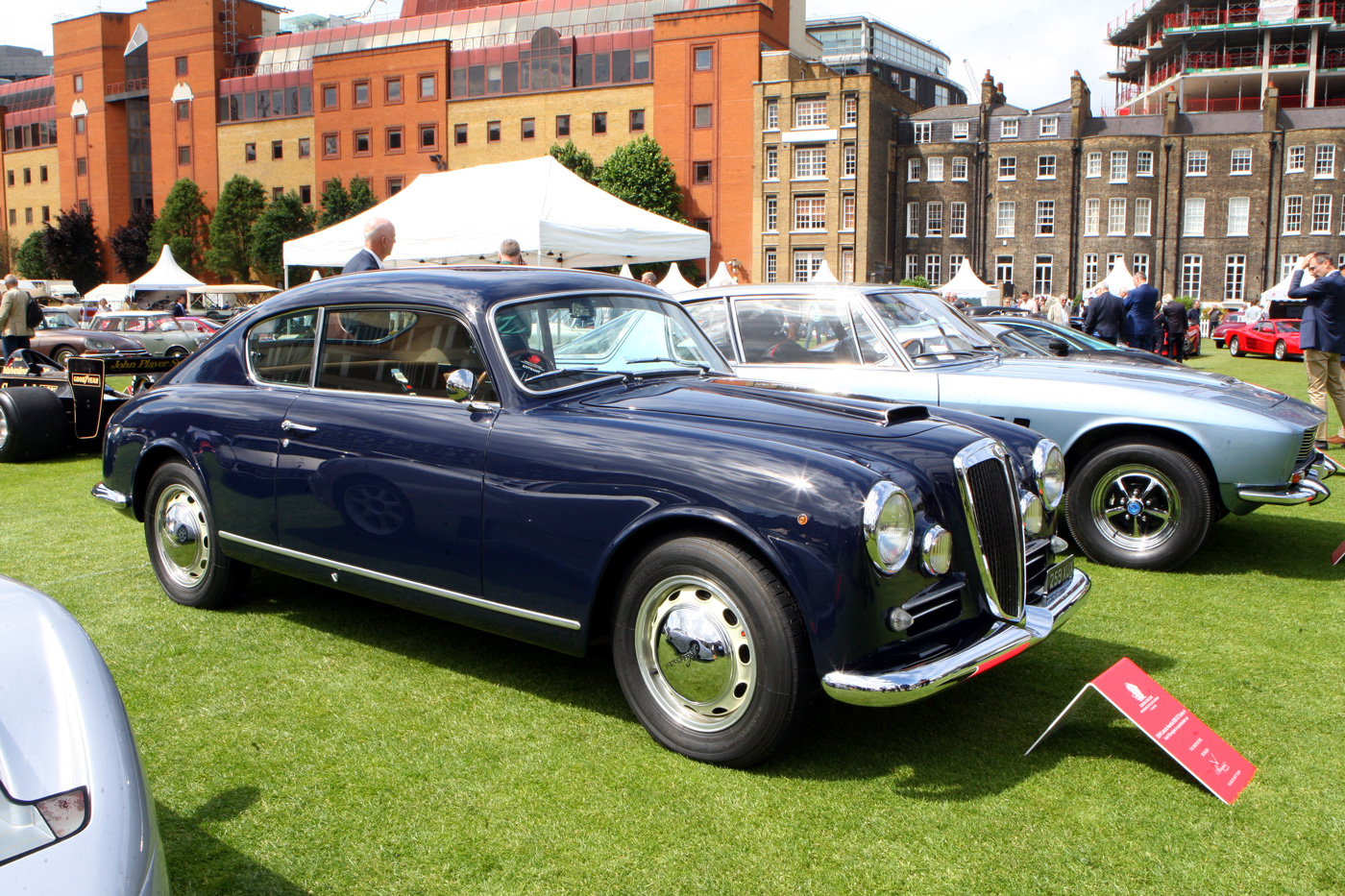
An Innovator class beauty, the first V6 engine in a production car, 1954 Lancia Aurelia B20GT Series 4, one of 745 Right Hand drive versions constructed.
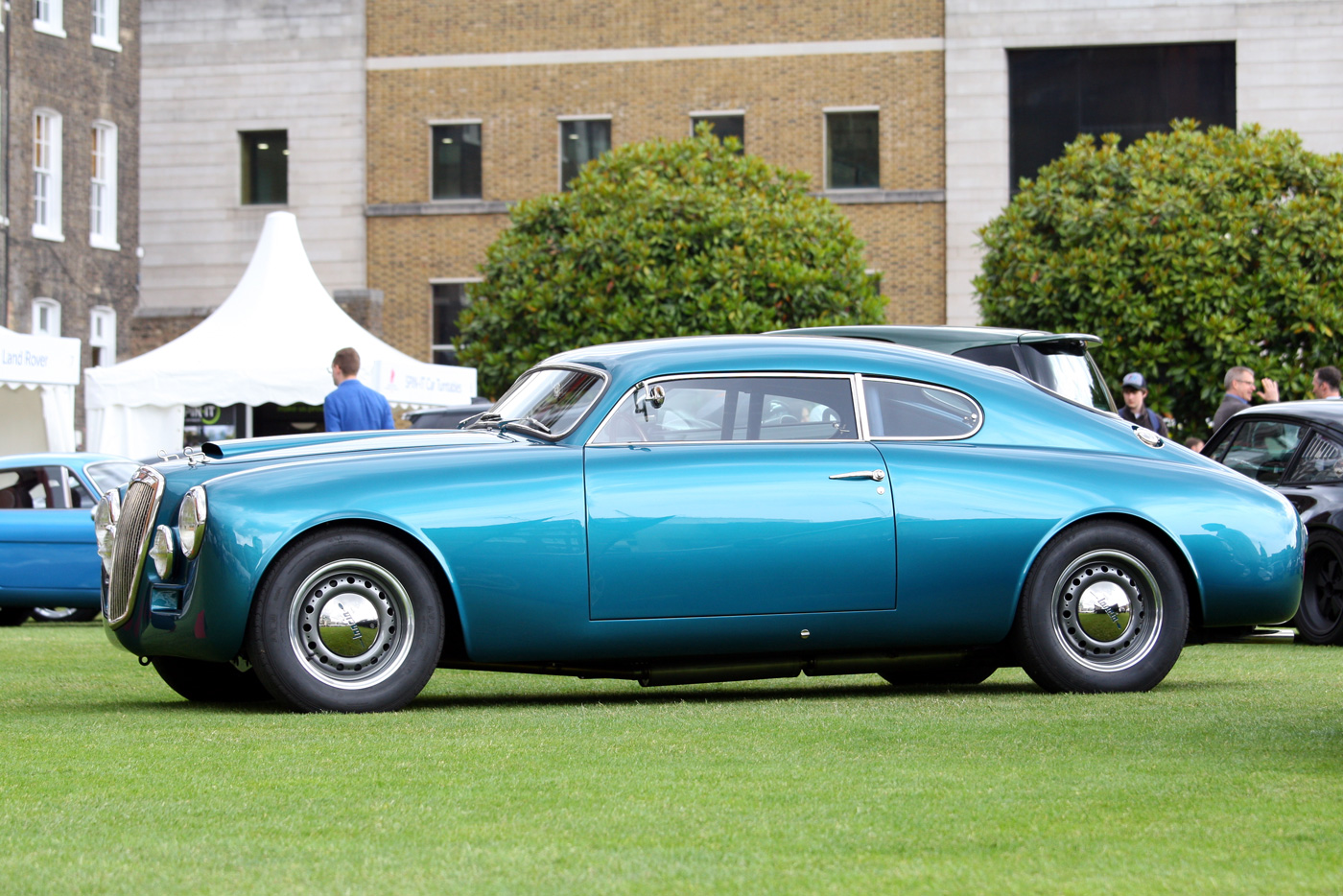
The purists may throw their arms up in horror but this Lancia Aurelia outlaw, built by Thornley Kelham along the lines of the Bracco Series 1, gets my vote. Winning the Outlaws class, modifications include a fuel injected 2.8 Flaminia engine, air conditioning, disc brakes all round, uprated suspension and a bespoke interior.
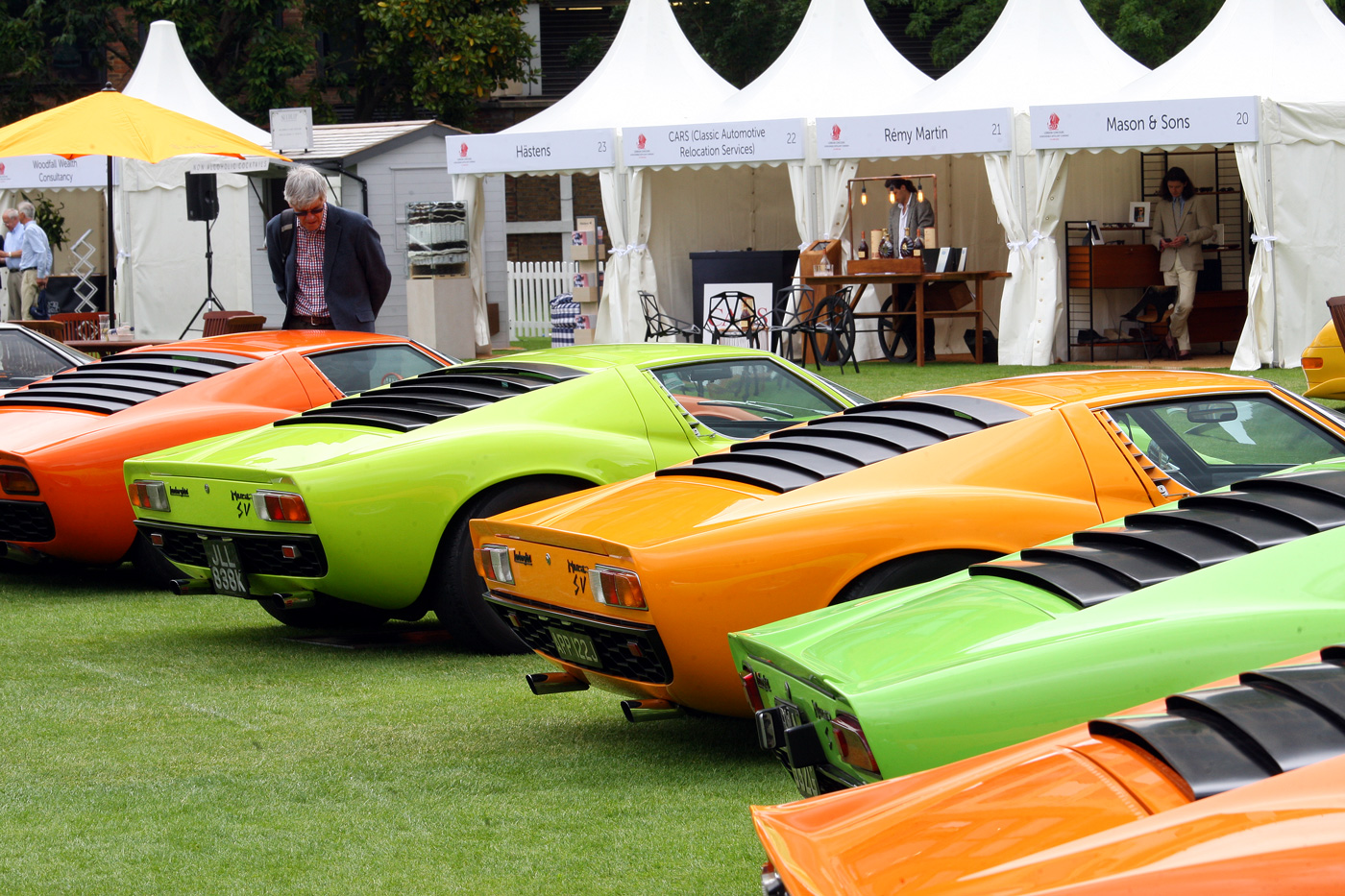
In this the 50th anniversary of the iconic film The Italian Job the organizers of the show put on a very photogenic display of Lamborghini Miuras from P400s to a Jota.
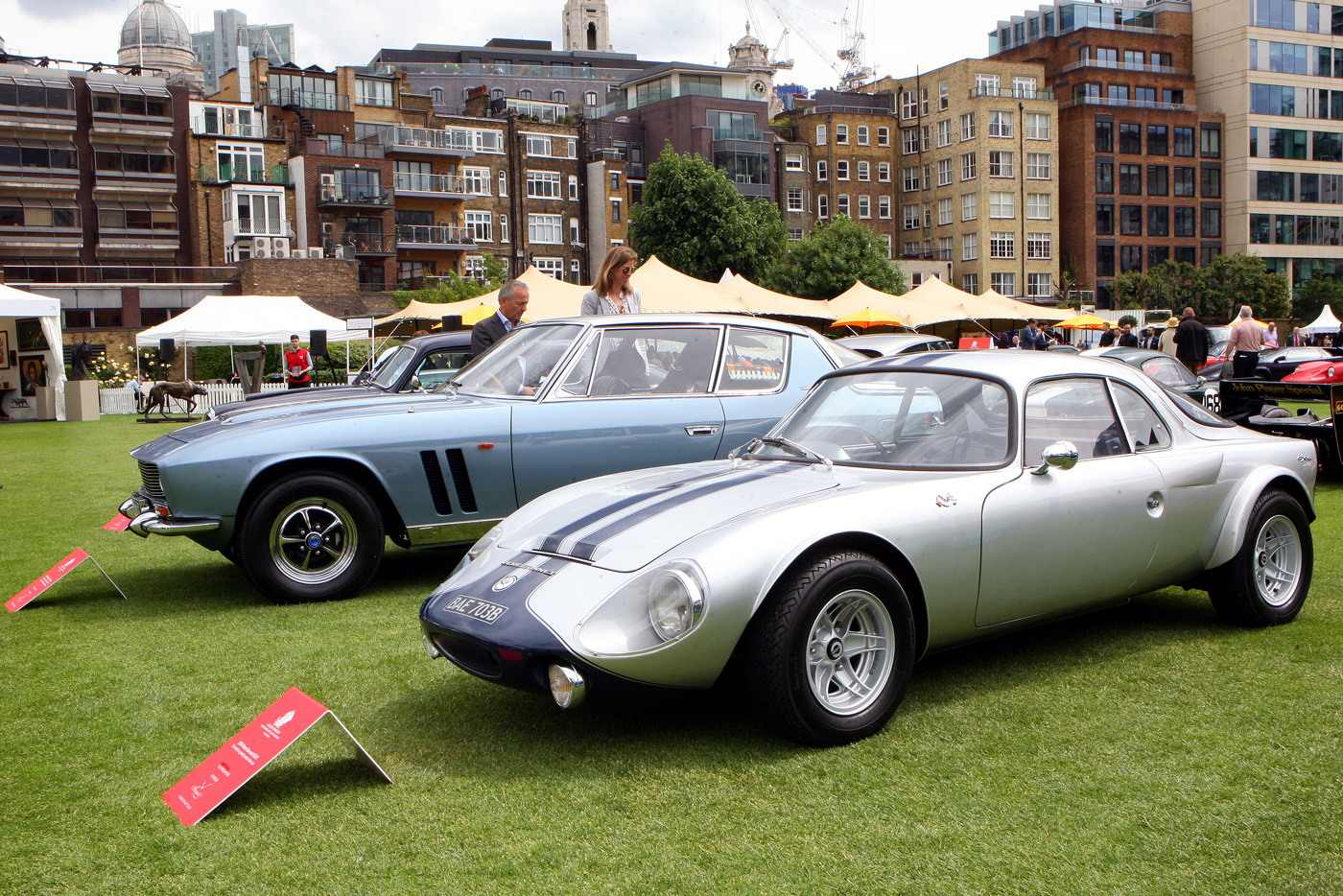
From the Innovators class, the first mid-engined production car, the 1964 Rene Bonnet Djet, powered by a 65 bhp Renault 8 engine mated to the gearbox from the Renault Estafette van giving a top speed 103 mph. 1495 examples were built before being replaced by the Matra 530.
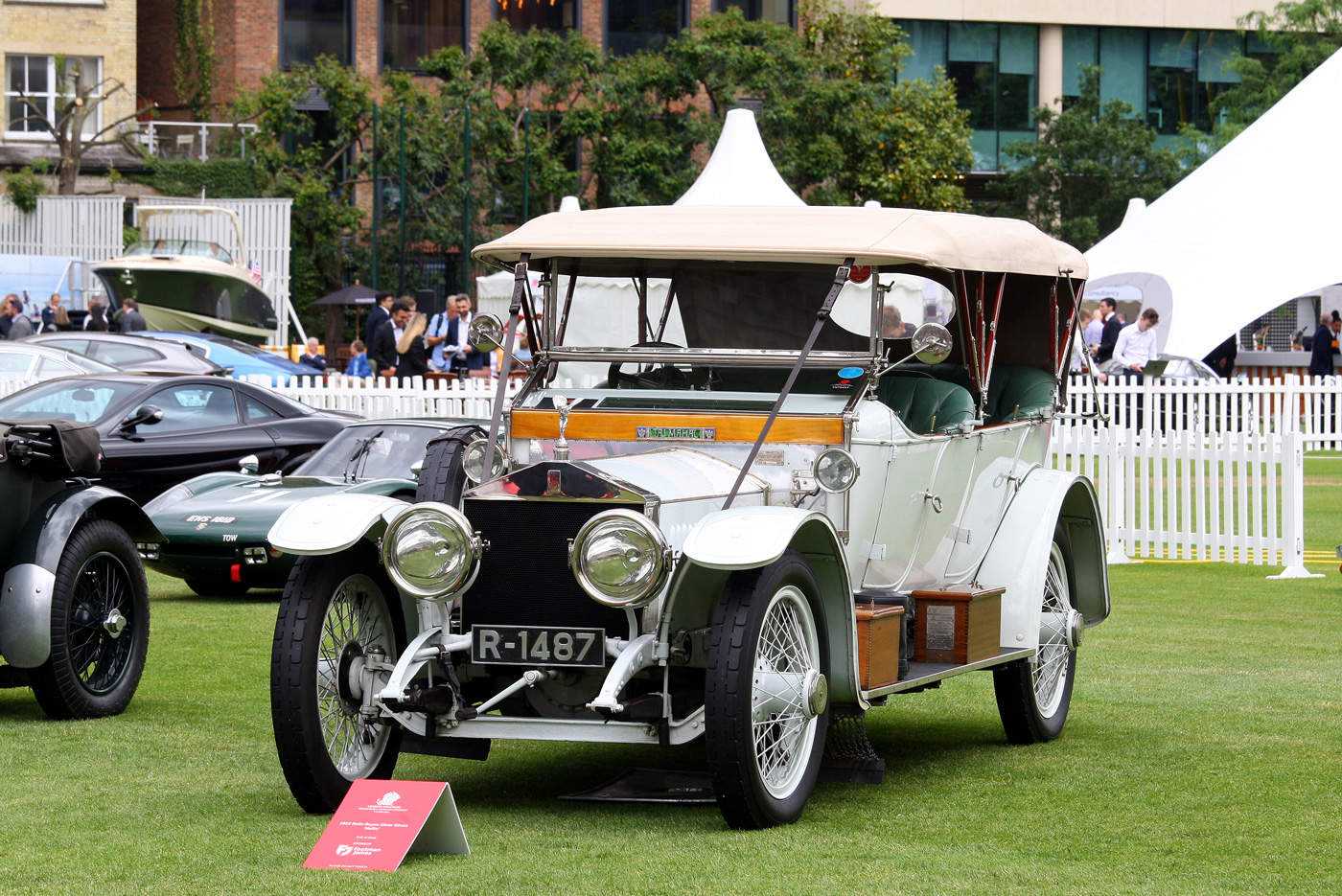
Nellie is a 1912 Rolls Royce Silver Ghost which won the Icons class. The Taj Mahal name plate was fitted as a marketing tool by Claude Johnson, which worked as the car was quickly purchased by the Maharaja of Nabha, with whom she stayed until returning to the UK in the 1990s.
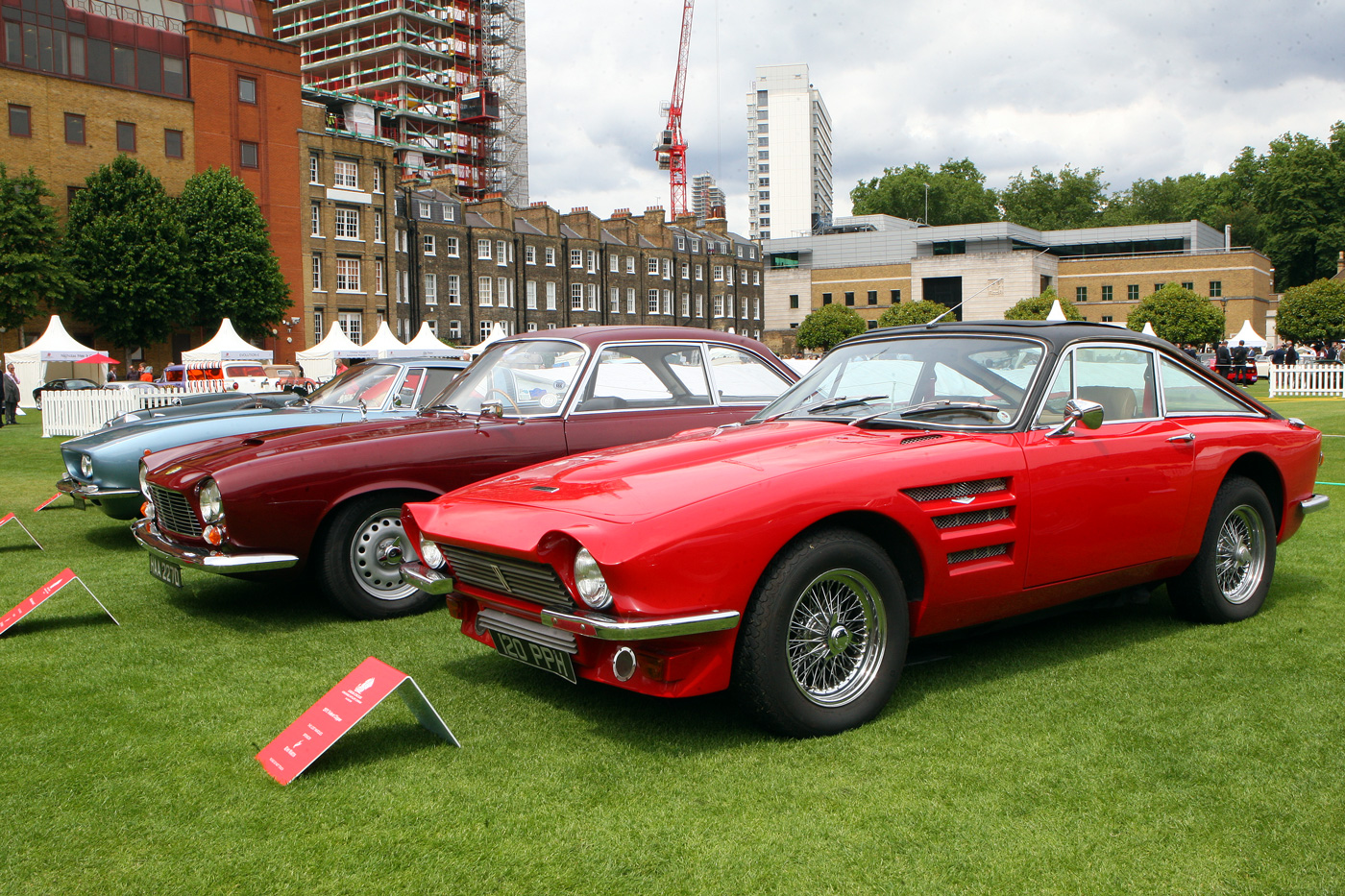
Another Lost Marque, The Trident Clipper was fitted with a Ford 289 V8 engine and a Trevor Fiore body. Approximately 85 Tridents were built of which it is believed that 30 were V8 Clippers This example dates from 1971.
In a separate display called “The Collector” were various cars from historic racer Julian Balme.
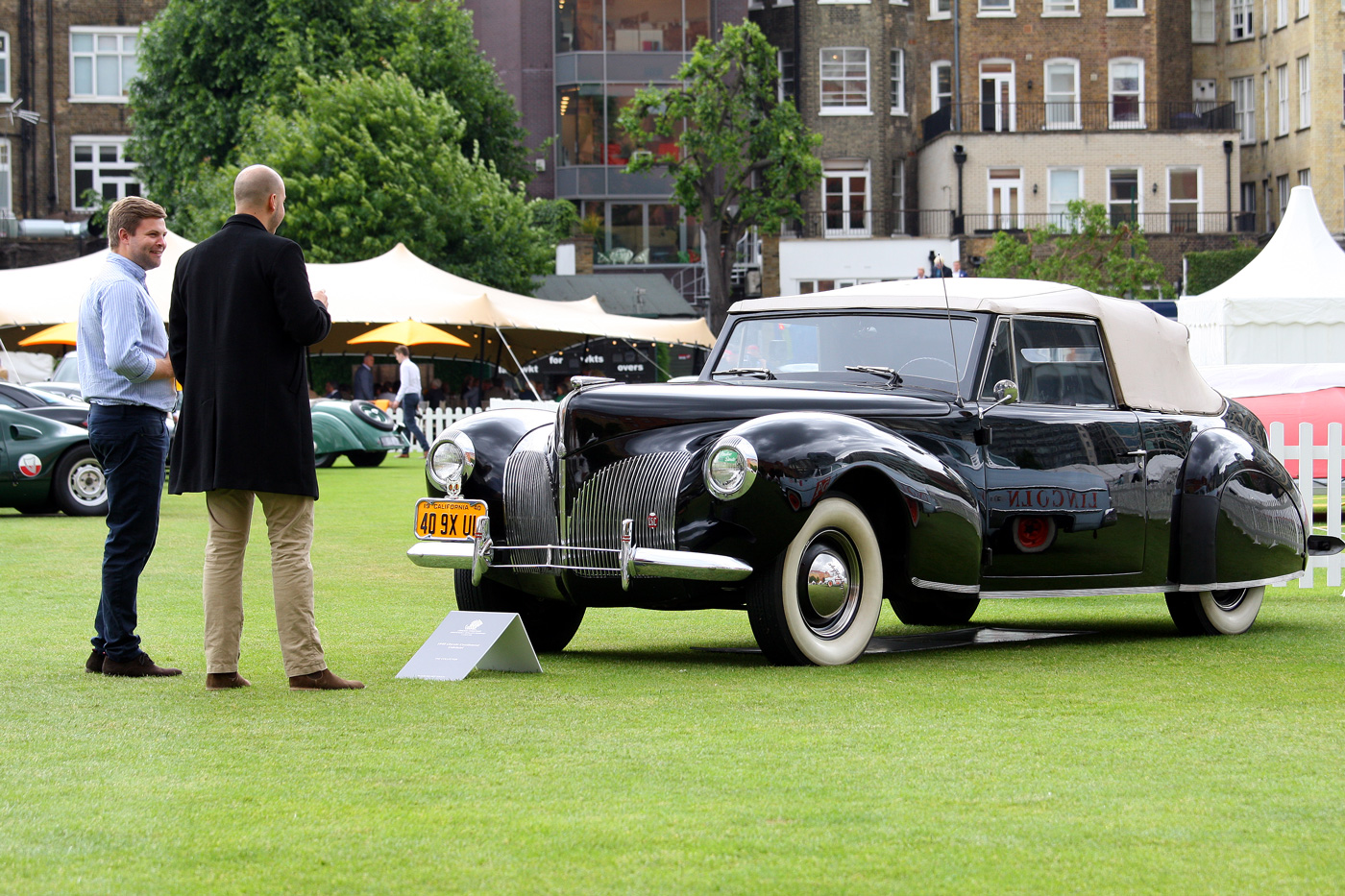
Shown here is a 1940 Lincoln Continental Cabriolet, of which only 350 were built. This is the only example in the UK.
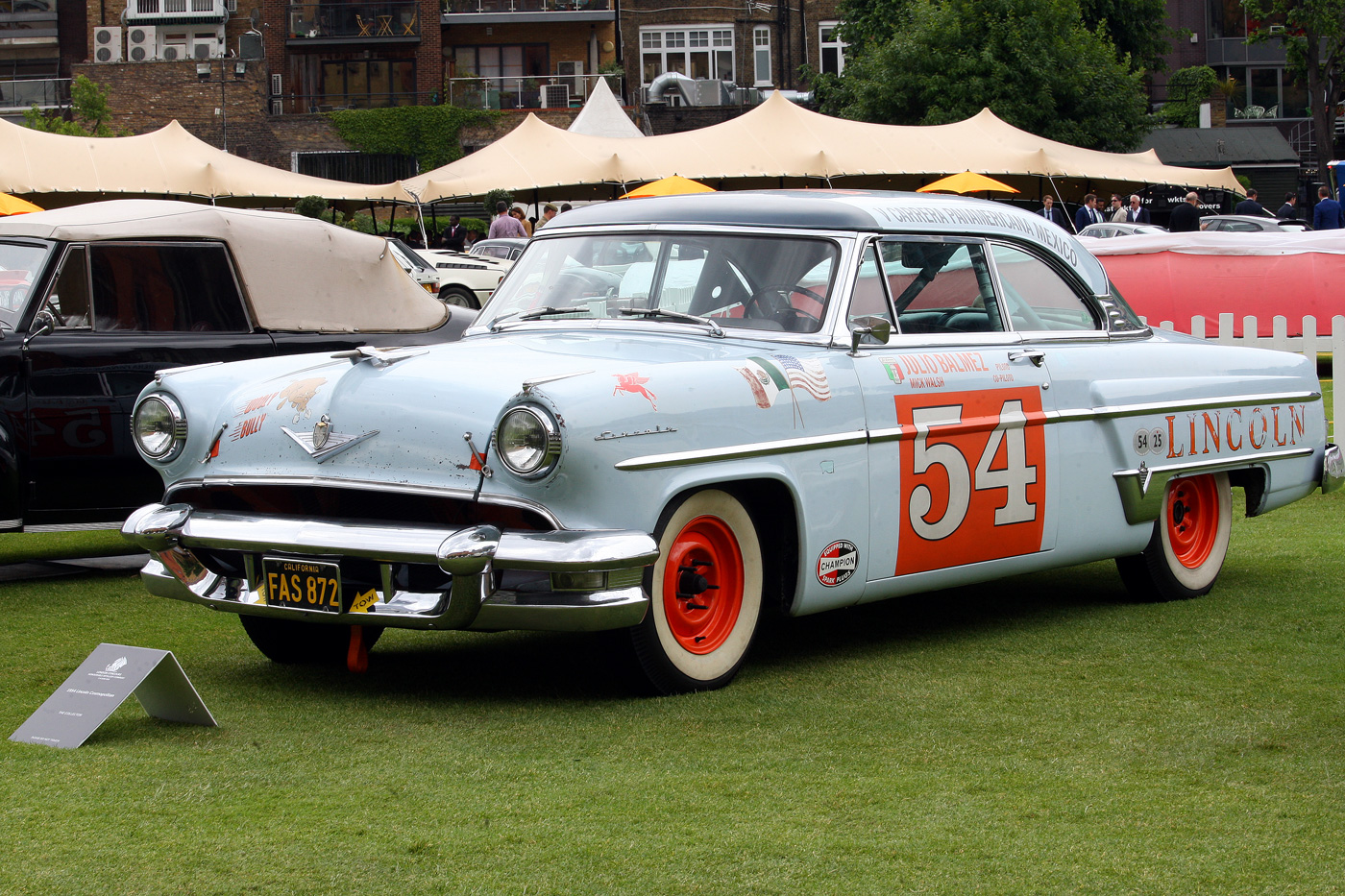
A 1954 Lincoln Cosmopolitan, known as Woolly Bully, as raced by Julian in the modern Carrera PanAmericana.
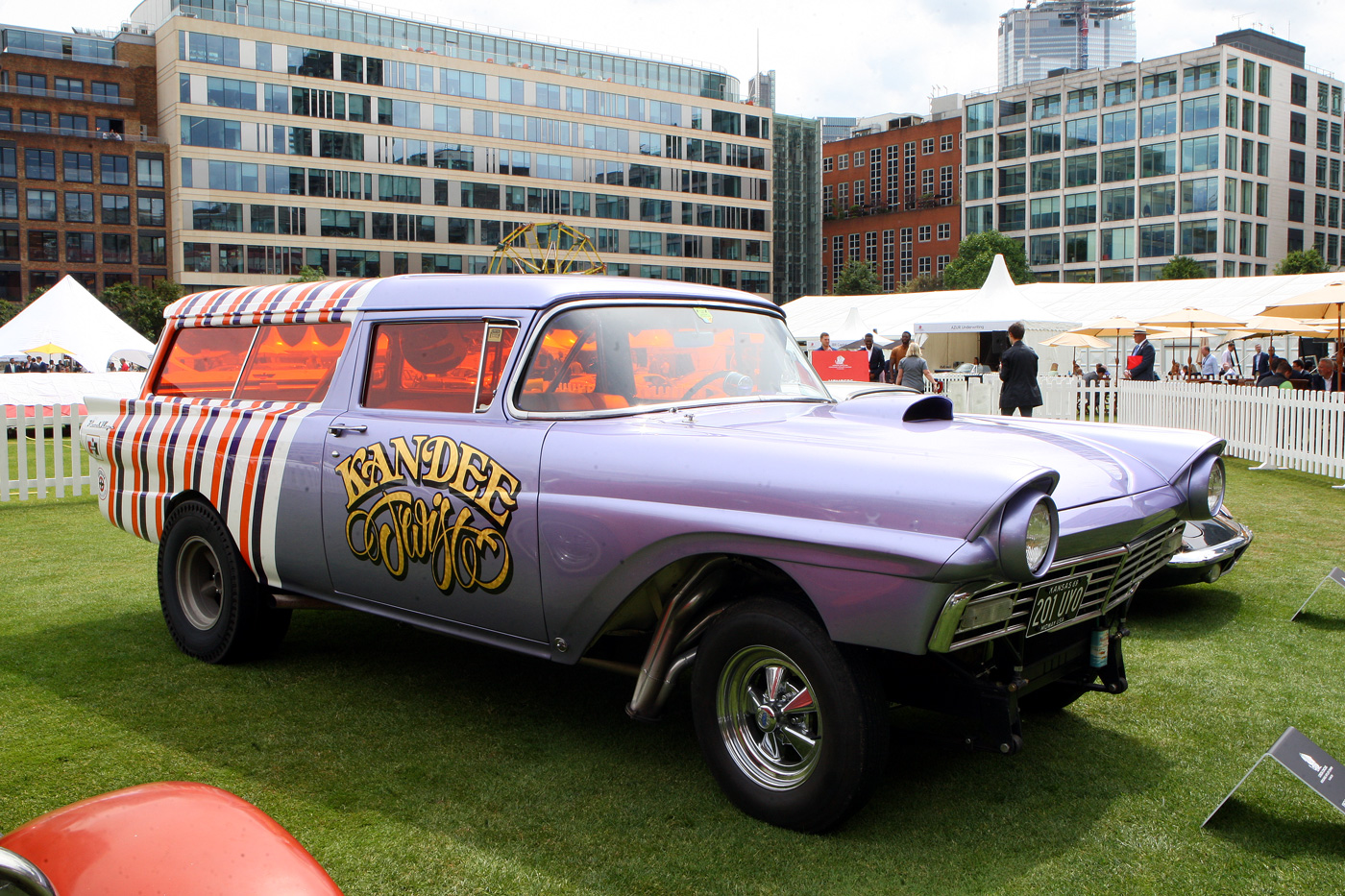
And Julian’s Gasser, a 1957 Ford Del Rio Ranch Wagon “Kandee Twist,” once a regular Grocery getter until conversion in 1969 to a Gasser.
These are the winners:
Great Marques – Ferrari, sponsored by ISAIA – Ferrari 166 Inter
Great Marques Jaguar, sponsored by Truefitt & Hill – Jaguar C-Type
The Icons, sponsored by Footman James – Rolls-Royce Silver Ghost
The Innovators, sponsored by Montres Breguet – Lotus 79
Made in Germany, sponsored by Geely – Volkswagen Golf GTI
The Outlaws, sponsored by Concours of Elegance – Lancia Aurelia B20 GT ‘Outlaw’
The Lost Marques, sponsored by Rémy Martin – Bristol 404
Best in Show – Jaguar C-Type
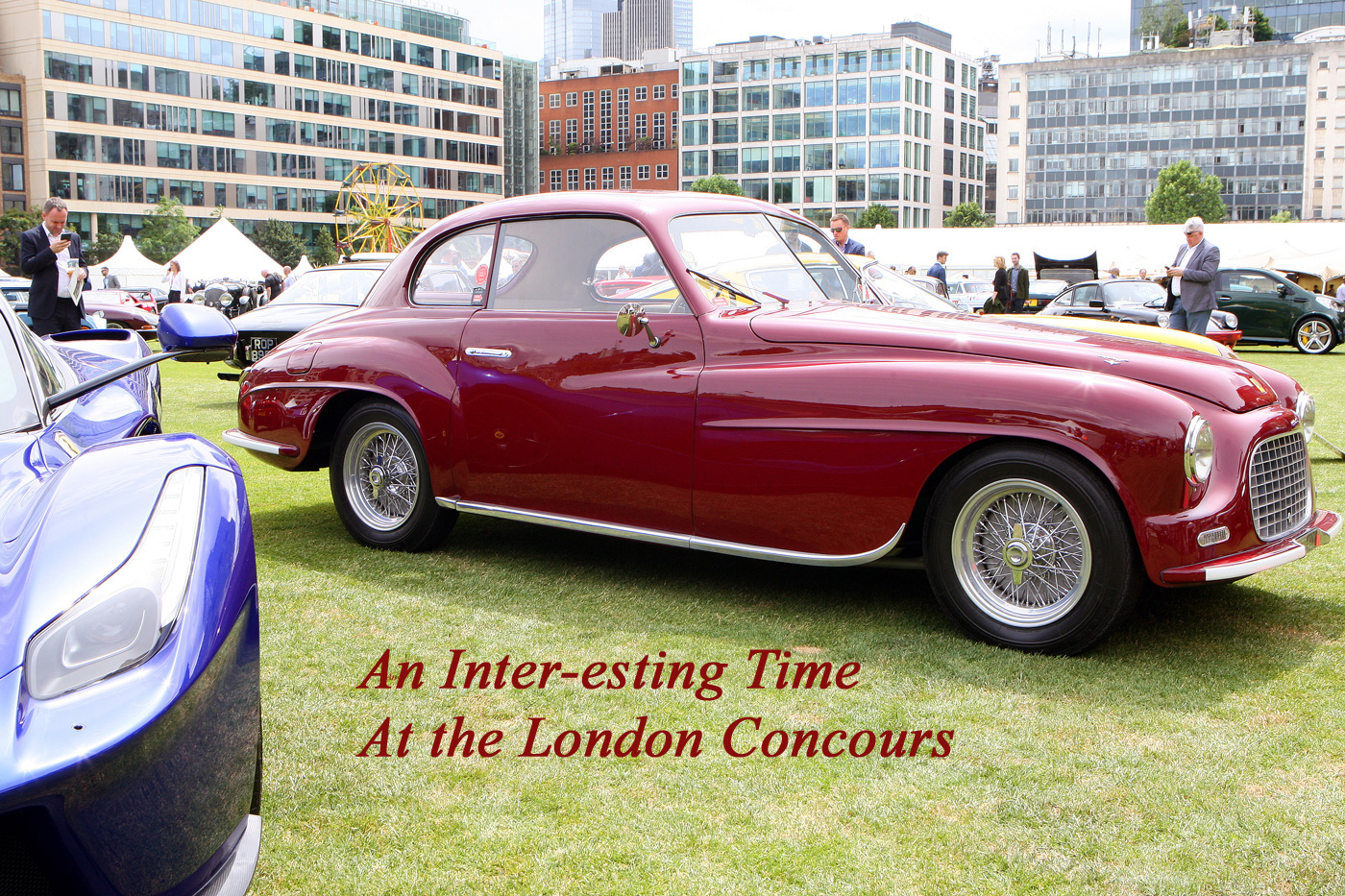
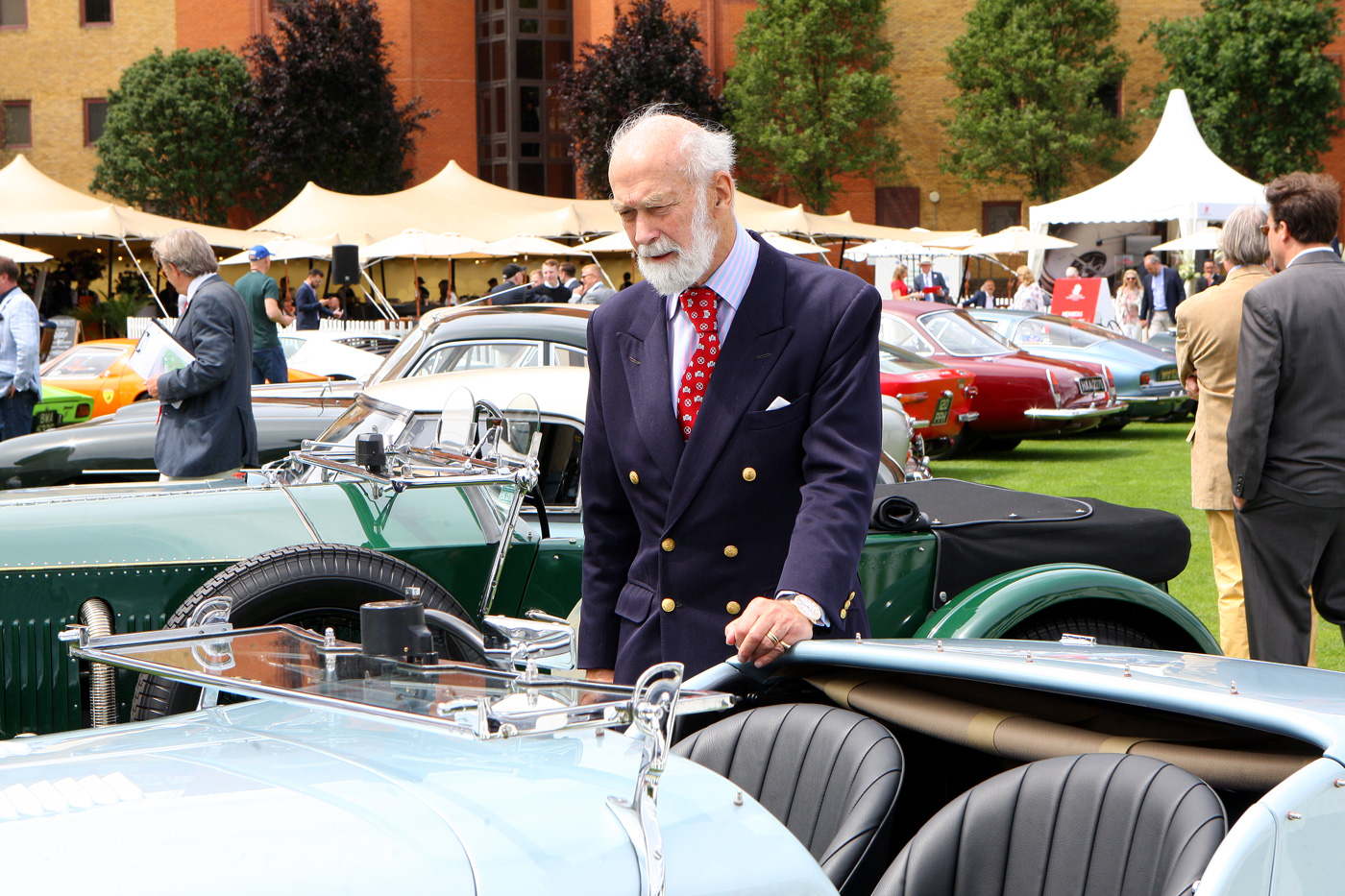

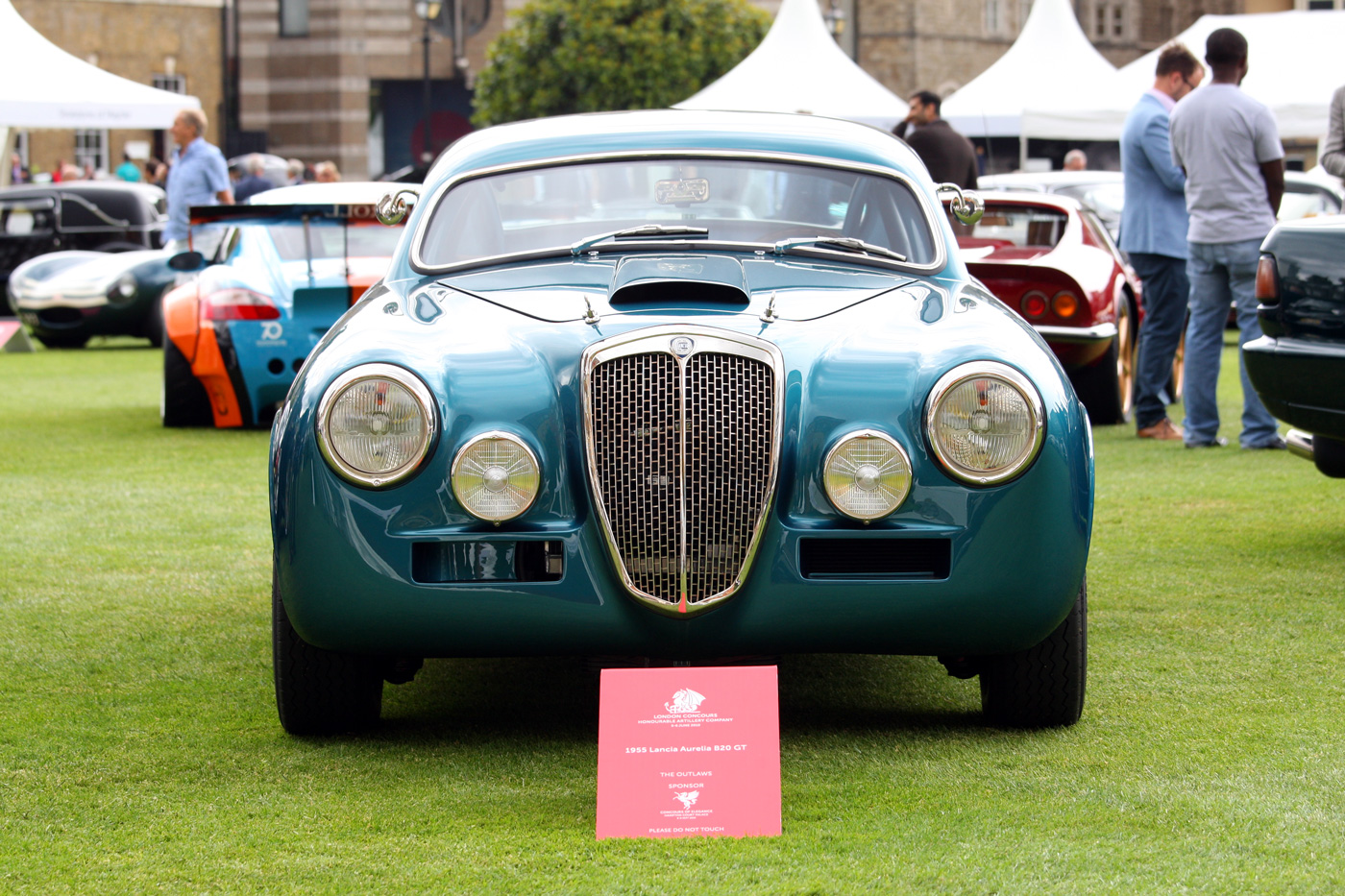

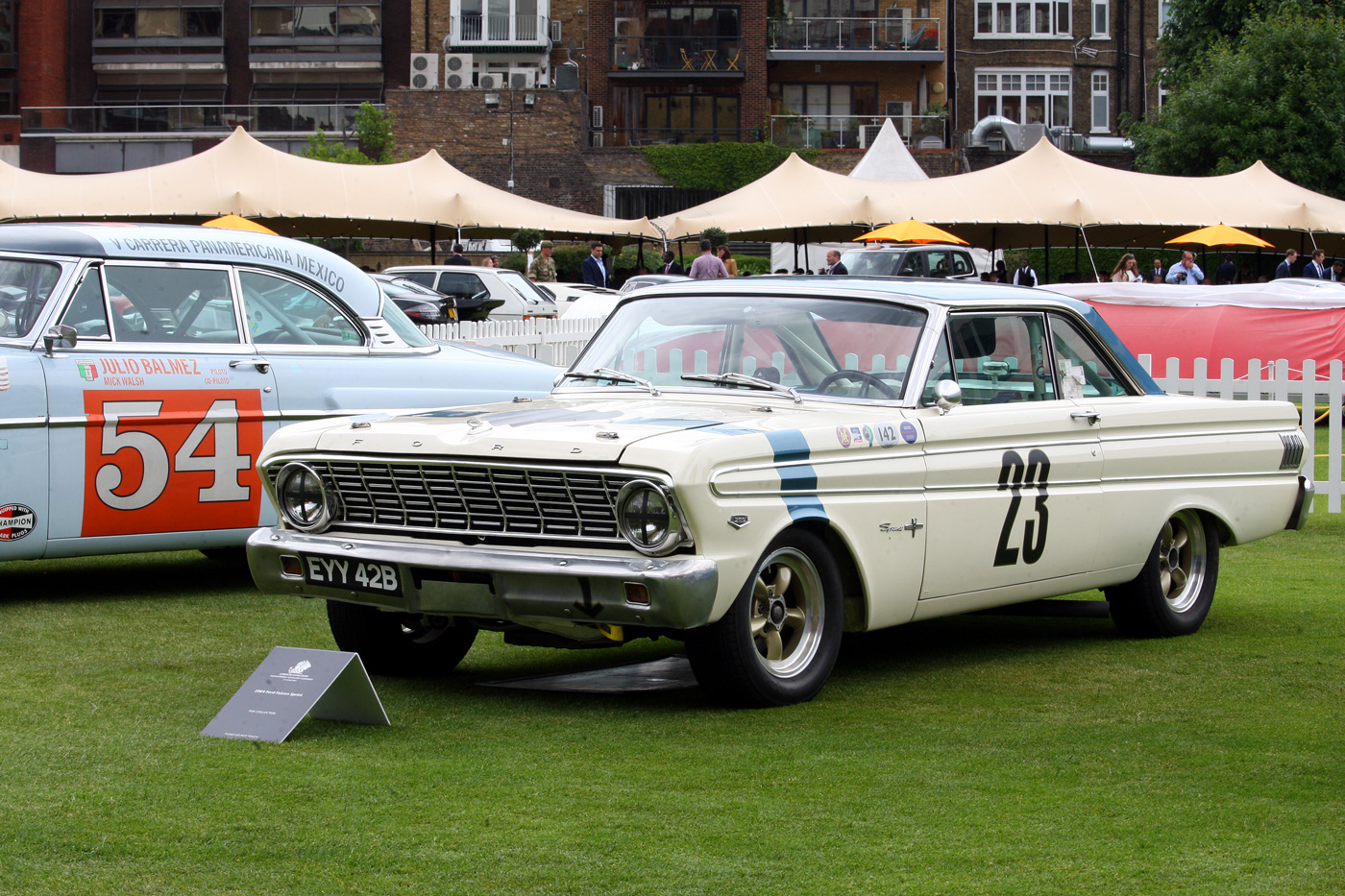
Great stuff! Can anyone identify the dark red coupe to the left of the Trident Clipper? Thanks!
A couple of nits to pick: The Bugatti EB110 was not styled by Marcello Gandini. Although he had been asked to submit a design, from which a prototype was built, the design was rejected. Instead, the design of the production car was by an in-house team led by Giampaolo Benedini. Who? you may well ask. Benedini was the architect who designed the magnificent factory at Campogalliano where the cars were built. So how come an unknown architect with no previous record of car design was chosen in preference to an established maestro like Gandini? It’s possible that Romano Artioli and Gandini had a falling out, and Artioli wanted to prove a point – that anybody could design a car, and he didn’t need to pay for the services of a superstar designer.
The second piece of pedantry: “Elde” was a pseudonym of Leon Dernier, incorporating the first two letters of his first and second names, with those of his first name written in reverse. “Leon Elde Dernier”, as you have it in your feature (caption for the 250 TdF photo), doesn’t exist.
Most impressive, thank you – not least the 1933 Standard Swallow SS1 Coupe.
Craig 3534, the car you are asking about is a Gordon Keeble. It’s an English GT with a fibreglass body, designed by Giugiaro while at Bertone. Power came from a Corvette V8.
One needs to be careful about declaring firsts in automotive innovations. Jaguar XKC005 is a wonderful and historic car, but the first car marque to be fitted with modern disc brakes was the Crosley in the USA in 1949. They were fitted across the line including the Hotshot that even had some racing history at the first Sebring race in 1950.
The RB Djet was a great car, but preceded in the mid-engine class by the 1901 Olsmobile Curved Dash. It is credited with being the first mass produced car with 19,000 of the model being built over about 6 years.
This show did really have a very interesting collection of cars on display.
Regards,
Randy Reed
We shall inform the owners accordingly…
Pete
Re Graham Earl’s reaction :
without wishing to pick the last nit Elde (actually Eldé) is simply composed by the driver’s initials .This practice is still current in Italy where thousands of businesses carry the owner’s initials as their name , e.g. Bielle is simply BL, maybe Bruno Levi’s company.
Keep up the good work, always a pleasure to read the Veloce articles.
Michel Van Peel
Randy,
Thanks. We might point out that all information about the cars at most events is obtained from the owner’s placard or event brochure or website. While we can’t fact check every one, if something looks unbelievable we simply omit the questionable fact or sentence, and we do plenty of that! In the case of the disc brake, did we forget the ’49 Chrysler and even before that the 1902 Lancaster?
Pete
Graham,
Yep, you are correct and the facts are stated in Gautam Sen’s two volume work “Gandini, Maestro of Design” (Dalton Watson). We have corrected the caption to reflect this. Perhaps it looks much more impressive to have Gandini on th car’s info sheet than Benedini!
Pete
What an incredible collection of historic, beautiful, interesting and in some cases wild cars. My personal favourite is above the caption ‘In your face’. The way that car company has fallen from grace still hurts today.